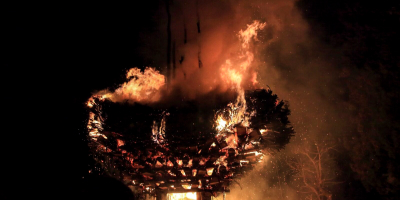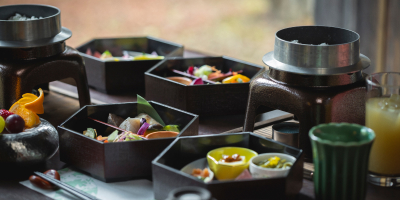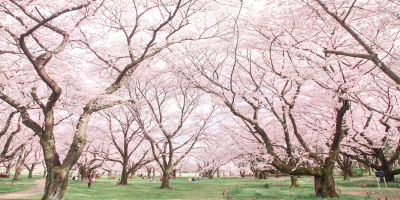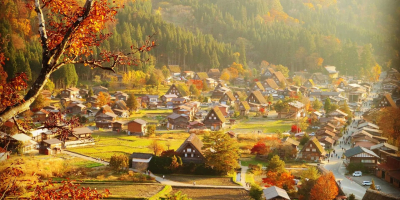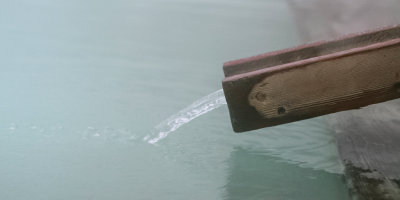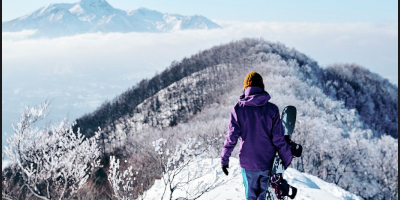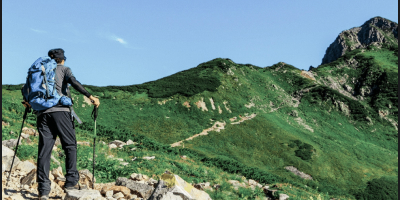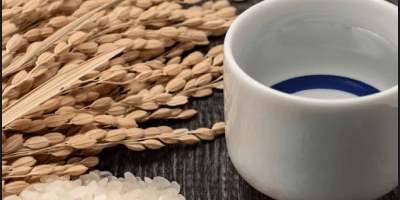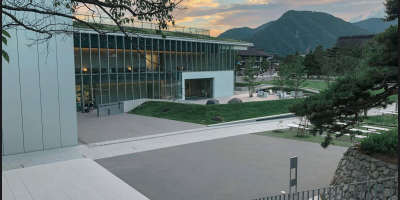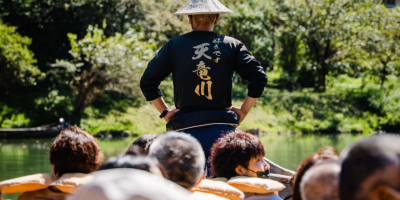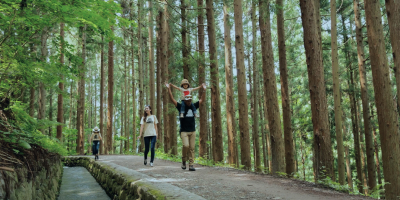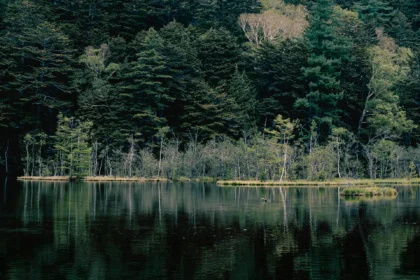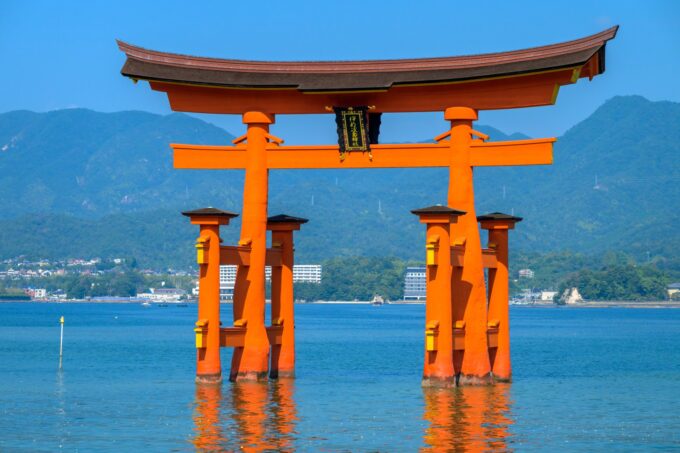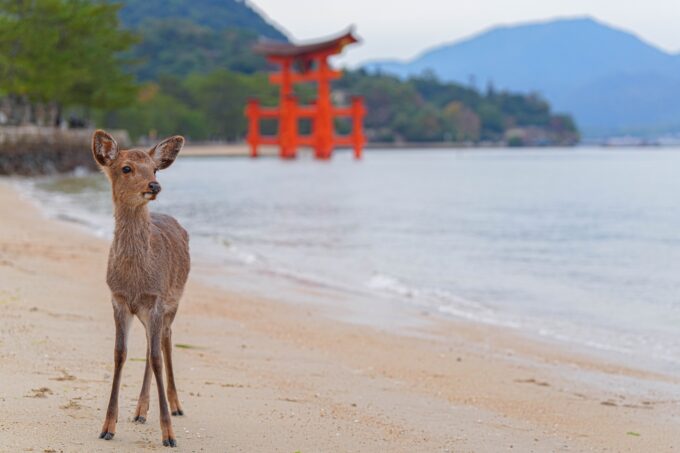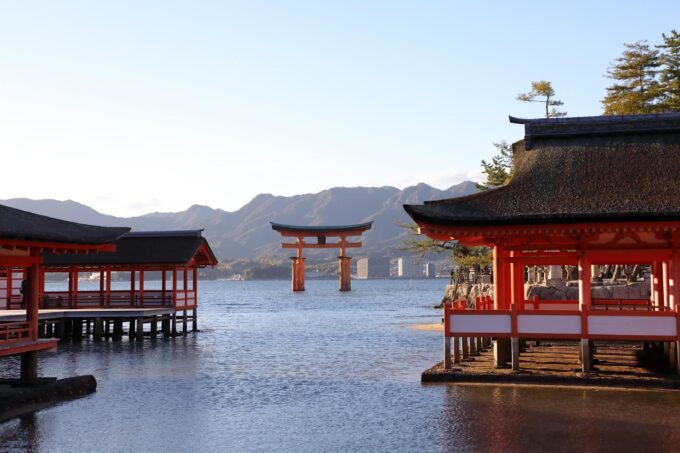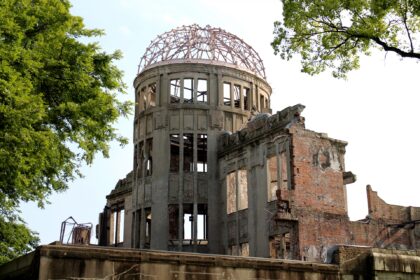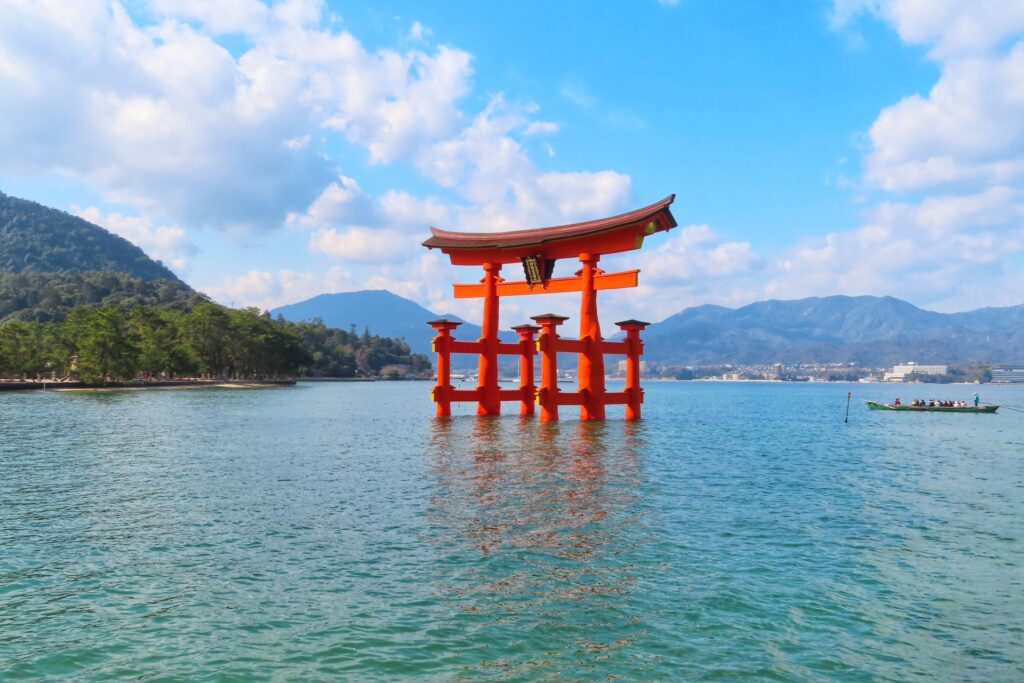
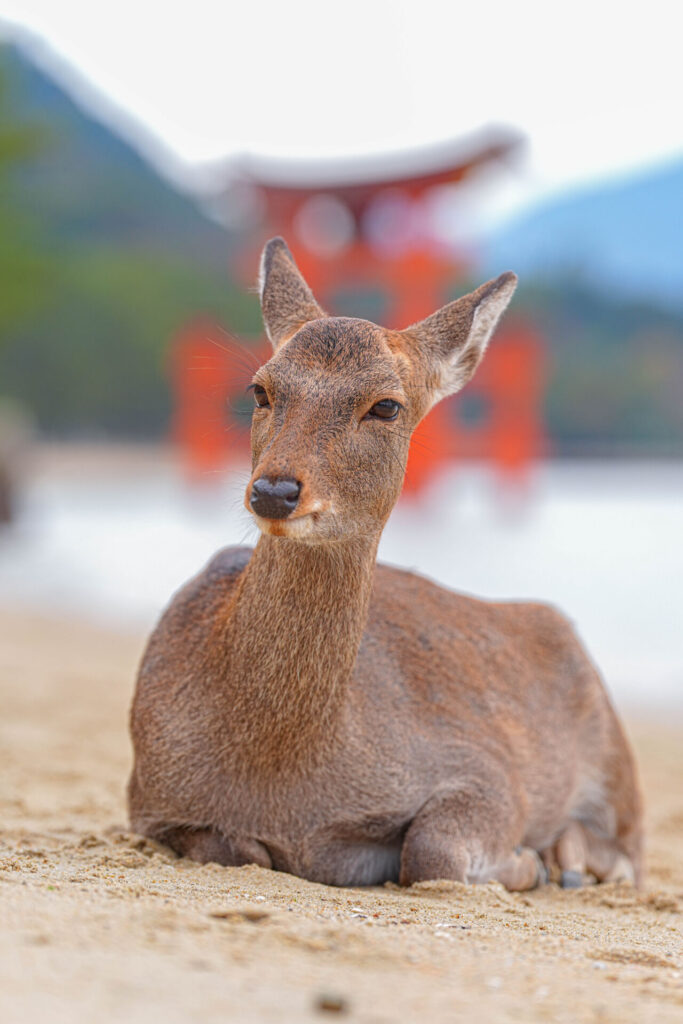
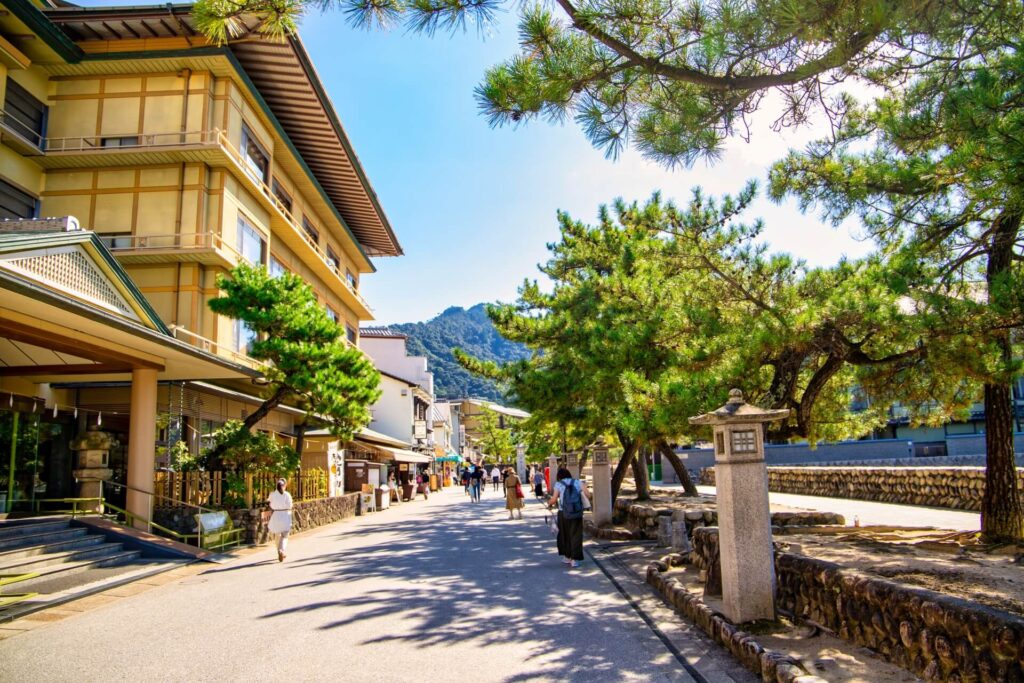
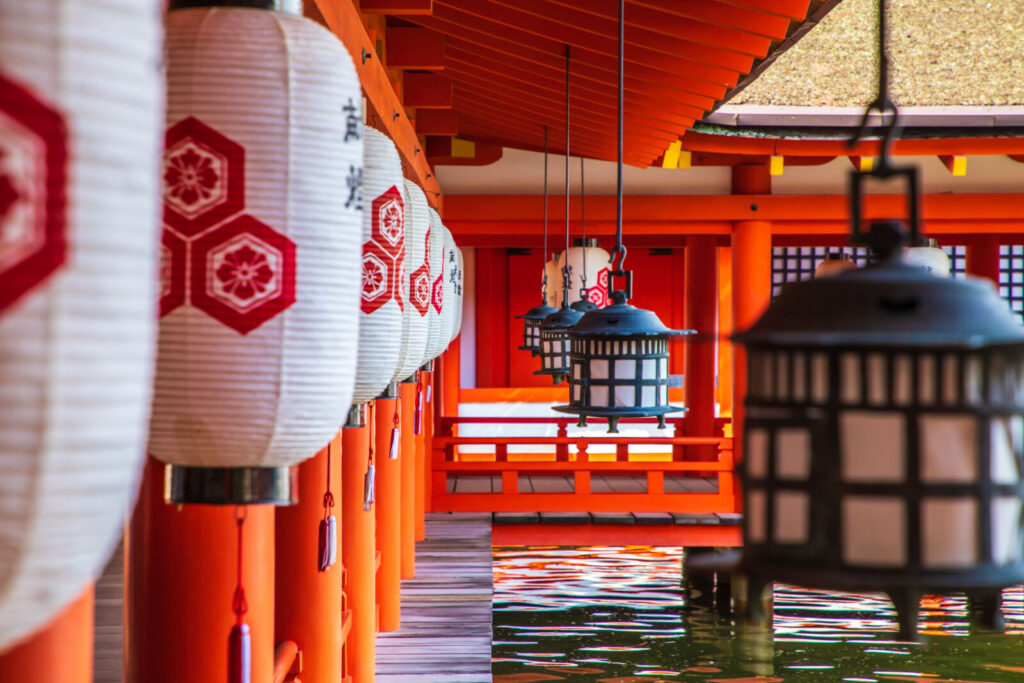
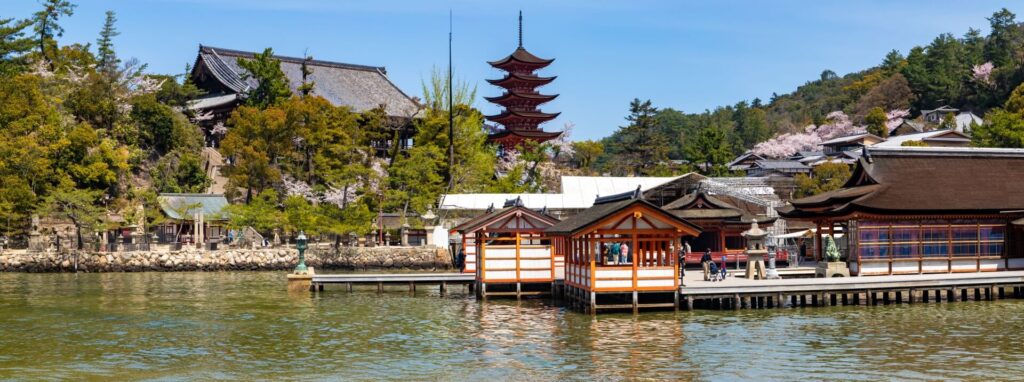
Being such a popular travel destination, it is not surprise that Miyajima is abound in sightseeing spots, activities, accommodations, events, and much more. For your convenience, we have gathered all the most relevant information pertaining to the Island and broken it down into different sections below. Take a look at everything that this island has to offer so that you can make the most out of your trip to Miyajima!
-- Mount Misen
-- Accommodations Around Miyajima
If getting to Miyajima and exploring on your own sounds too overwhelming, or if you are not sure how to fit a visit to the island into your busy travel itinerary, then look no further! We offer a 1-Day tour which will help you maximize your time in Hiroshima. You will be able to visit important locations within the city such as the Peace Memorial Museum and Atomic Bomb Dome, while also having the opportunity to make a stop by Miyajima. Click on the tour card below for more details!
WHERE IS MIYAJIMA?
Miyajima is part of the city of Hatsukaichi, which is located to the west of Hiroshima Prefecture. The island lies within the Seto Inland Sea, a body of water which sits between the major islands of Honshu, Shikoku, and Kyushu. Miyajima is also considered to be one of the main highlights of the Setonaikai National Park, a national park made up of more than 11 prefectures and covering 900,000 hectares of combined land and sea areas. The island is not connected to the mainland by bridge, and can only be accessed on boat. For information on how to get to Miyajima, see the corresponding section below.
HISTORY OF ITSUKUSHIMA ISLAND

Miyajima has long been regarded as a sacred place of worship, particularly in relation to nature. Since ancient times, the island’s highest point, Mount Misen, has been considered a holy place with great spiritual energy. It is believed that the first shrine on the island, Itsukushima, was built as far back as the year 593, by the then governor, Saeki Kuramoto. During this time, Miyajima served mostly as a place for Shinto (Japan's native religion) worship and was largely uninhabited.
It wasn’t until the year 806, when the monk Kūkai, also known as Kōbō Daishi, founded the first Buddhist temple of the island. It is said that when Kūkai first arrived at Miyajima, he recognized it as a place of great spiritual power and thus chose to build a Hondo (main hall) on Mt. Misen, where he performed one hundred days of ascetic training. Since then , Miyajima has also been a major location for Buddhism worship.
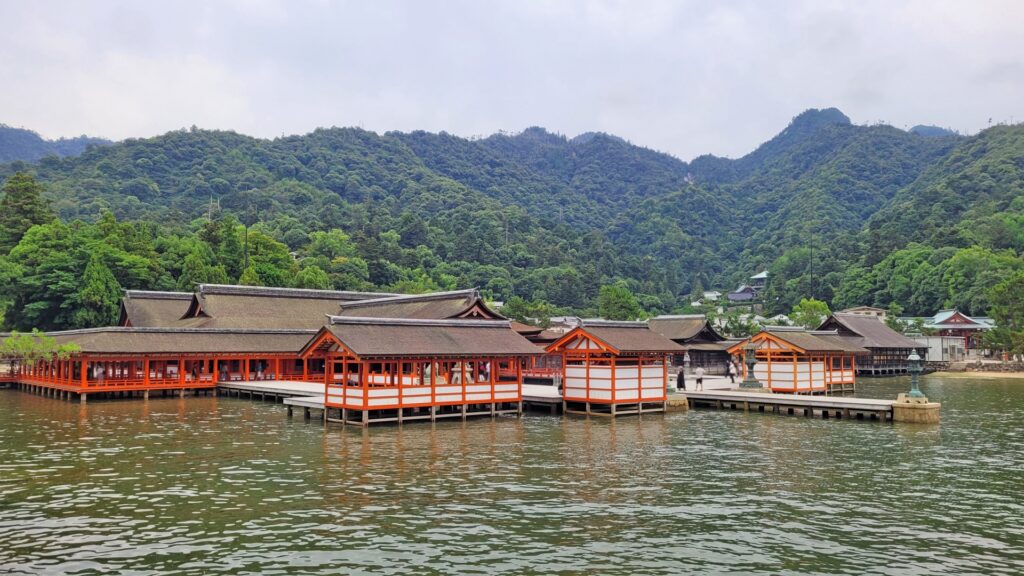
In the year 1146, Taira no Kiyomori was assigned as the ruler of the Aki Province, what is now known as Hiroshima Prefecture. Some years into his rule, he decided to rebuild Itsukushima Shrine in the shinden-zukuri style (Japanese architectural style for residences during the Heian period). This is how the shrine acquired the look that it has today with its iconic “floating” O-torii gate.
As Kiyomori’s rank and importance grew, many notable people began to visit the shrine, including aristocrats and members of the imperial family. With patronage from the powerful Taira Clan, and Kyoto culture being brought over to the island and shrine by Kiyomori, Miyajima flourished and developed into a prominent holy place. The mid-14th century marks the time when people other than priests began to live on the island.
Throughout the next hundreds of years regimes rose and fell in Japan, and the ownership and management of Miyajima was passed from the hands of one lord to the next. The island also saw some conflict during the Sengoku period (warring states period), when the “Itsukushima Kassen” (Battle of Miyajima) took place between the forces of the lord Mōri Motonari and the samurai Sue Harukata. Following his victory and subsequent ascent to power in Western Japan, Mōri and his son greatly contributed to the development of Itsukushima by adding the Tenjin Shrine and rebuilding the Soribashi bridge within the shrine’s grounds.
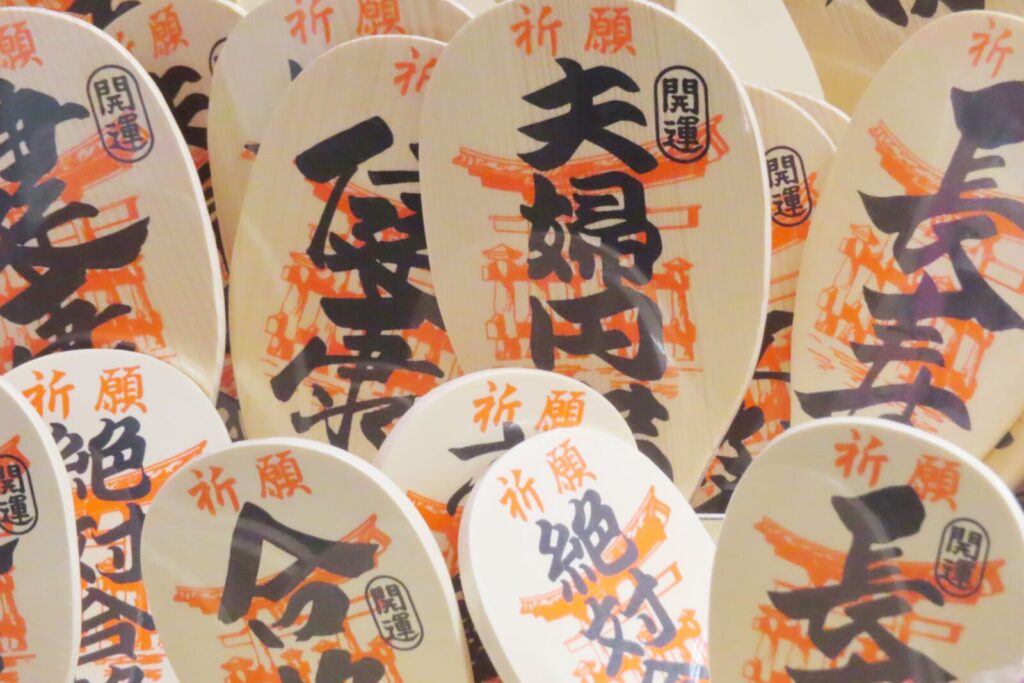
During the Edo era, Miyajima became an important place for trade and a center of culture. It was known as a place not only for worship, but where one could enjoy Sumo wrestling and Kabuki (classical Japanese theater). Later on, having realized that the island had no major industries, a Buddhist priest called Seishin came up with the idea of making wooden rice scoops in the shape of a Biwa, a type of Japanese lute. Today, rice scoops are one of the symbols of Miyajima.
In the year 1923, Miyajima was designated as a location of historical importance, and in the year 1950 it became part of the Setonaikai National Park. Finally, in 1996, it was registered as a UNESCO World Heritage site. Today, the island is visited by more than 4 million people every year, all who come to admire the scenic beauty, relaxing ambiance, and divine environment of Miyajima.
ITSUKUSHIMA SHRINE
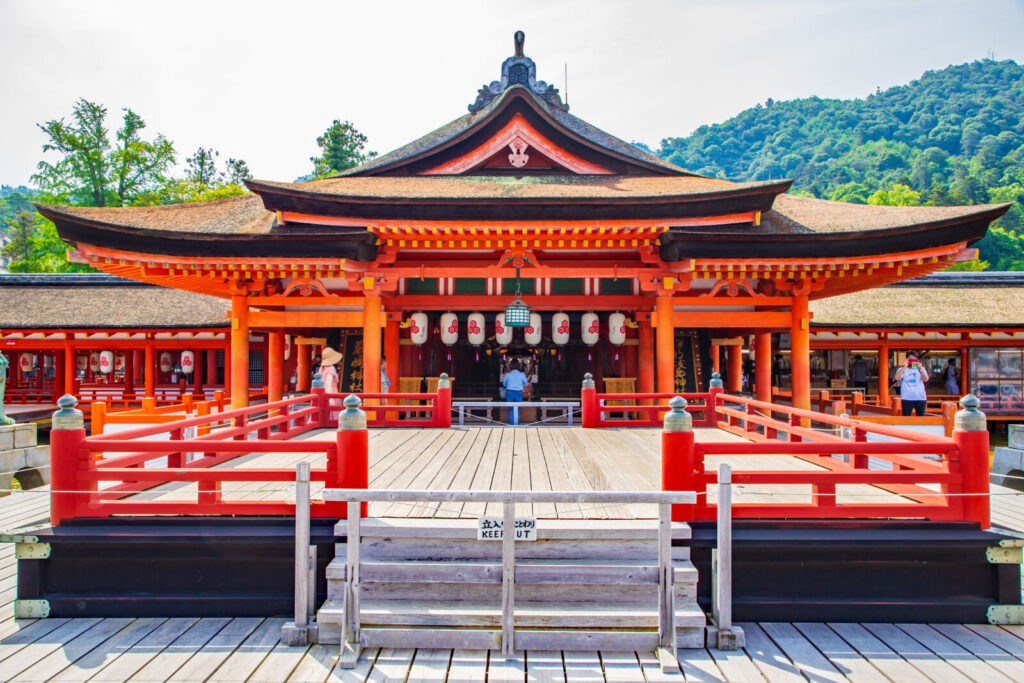
First built in 593, Itsukushima Shrine is Miyajima's most recognized location and a place of great importance for Shinto worship. The appearance of the shrine can be largely attributed to a historic ruler of the Aki Province, Taira no Kiyomori, who in 1168 rebuilt Itsukushima in the shinden-zukuri style and added its emblematic "floating" O-torii gate. What started a small local shrine grew into a holy place visited by Japan's most powerful lords and rulers, and today it draws large crowds for both its religious importance and scenic beauty.
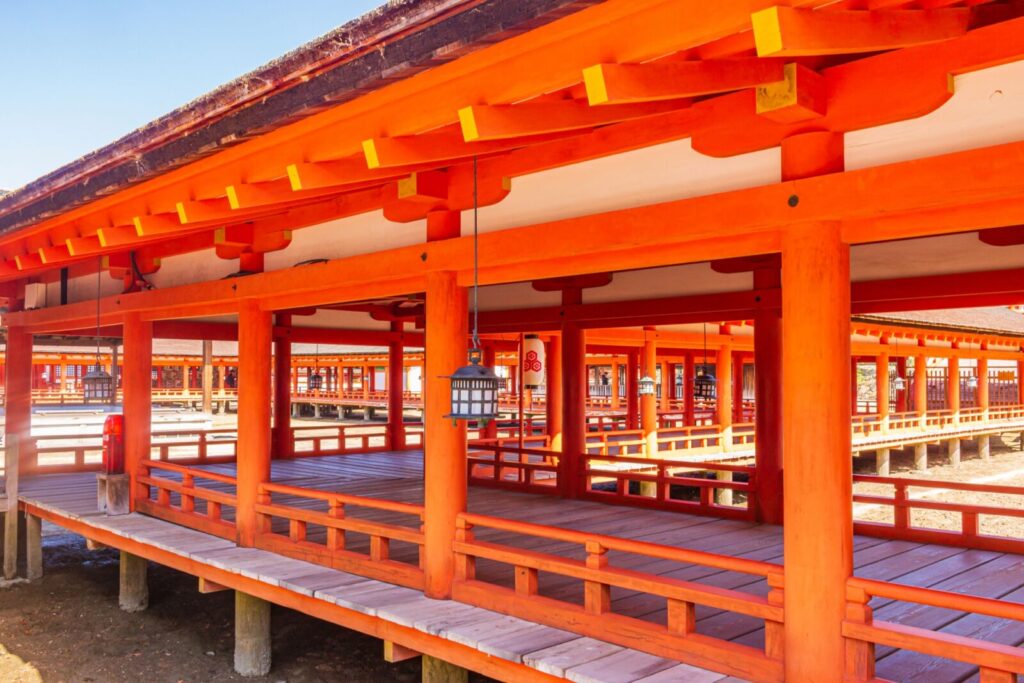
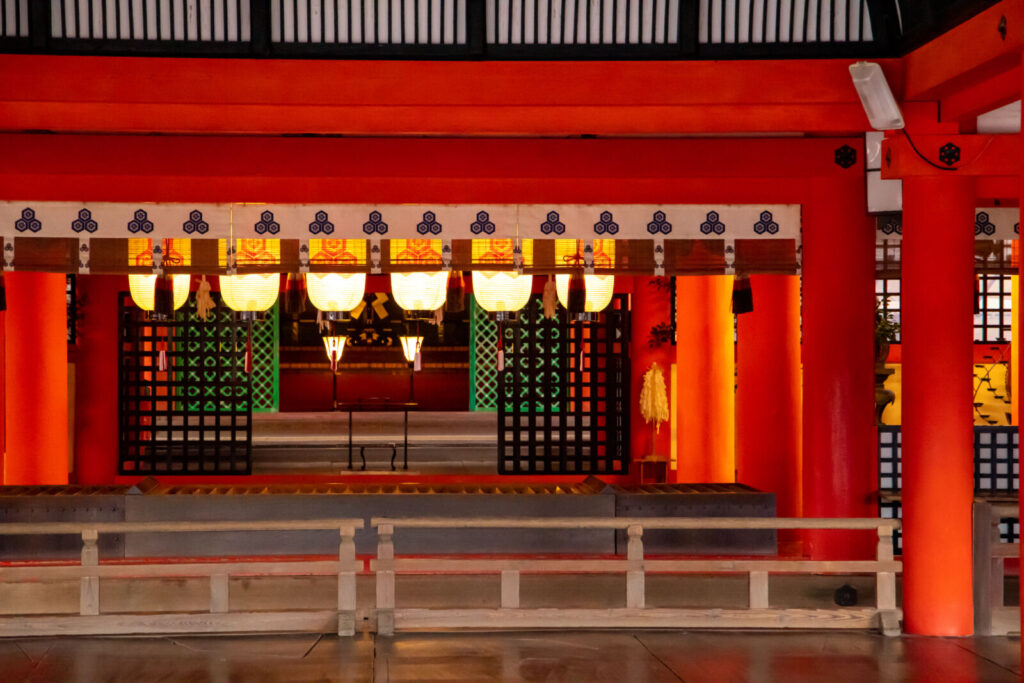
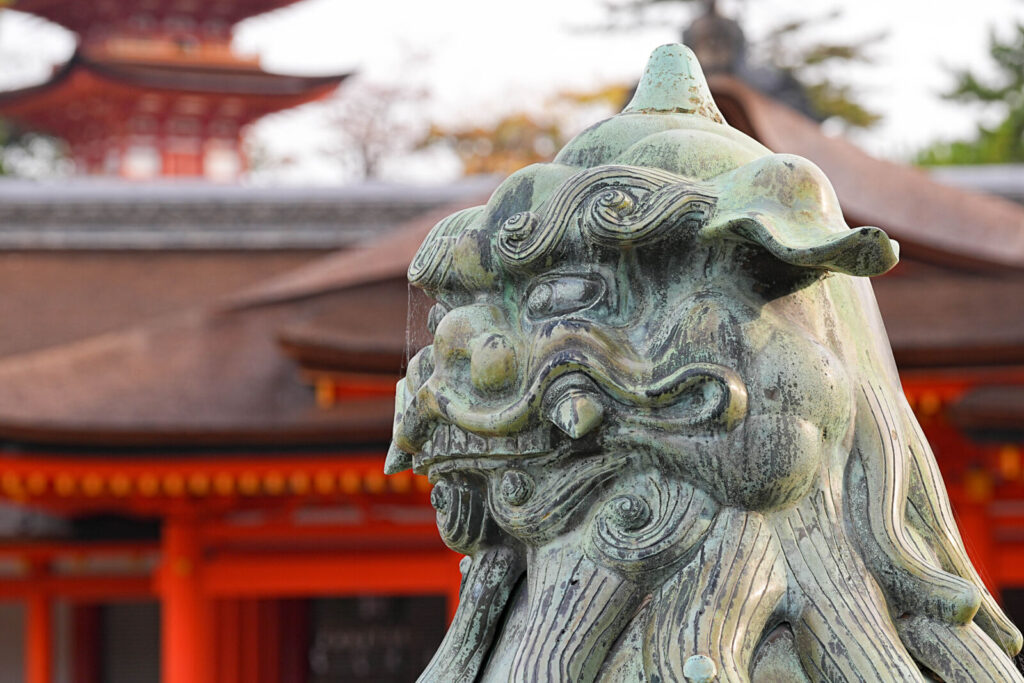
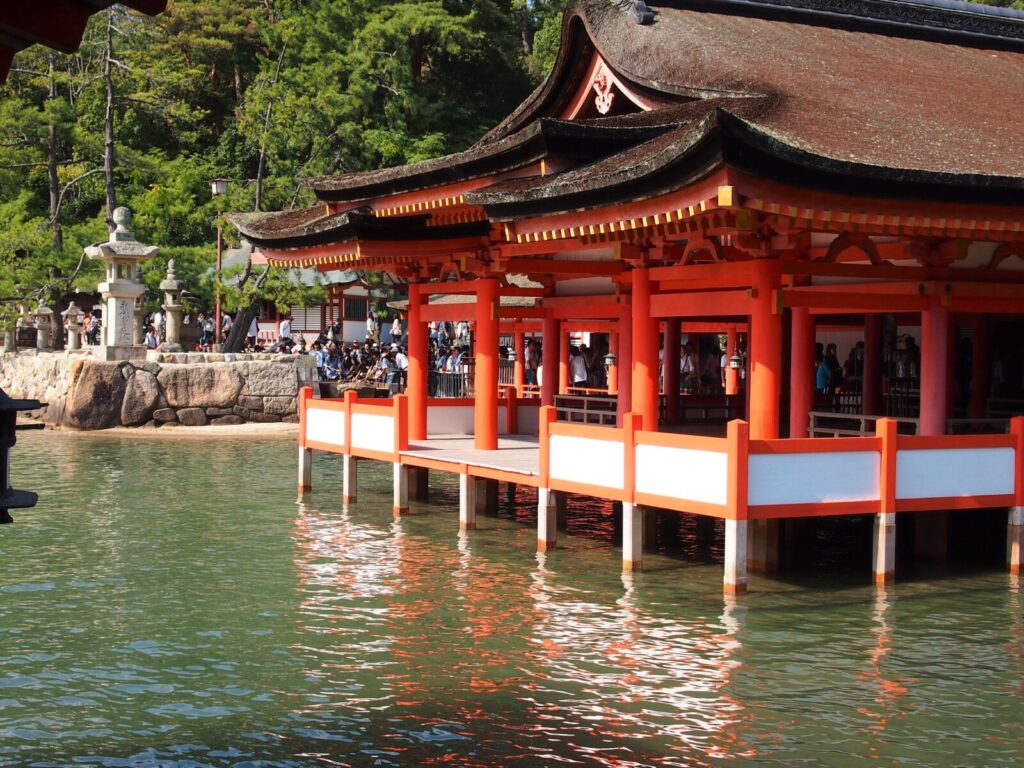
Itsukushima shrine is dedicated to three female goddesses known collectively as the Munakata goddesses. They are said to be the daughters of Amaterasu, Japan's sun goddess and the most venerated god in Shintoism. These goddesses are believed to be responsible for safe travel and traffic, particularly in regards to marine travel. In the past, when sailing was much more dangerous and Japan's only way of communicating with the Asian mainland was through sea travel, the three goddesses played an important role and were heavily worshiped.
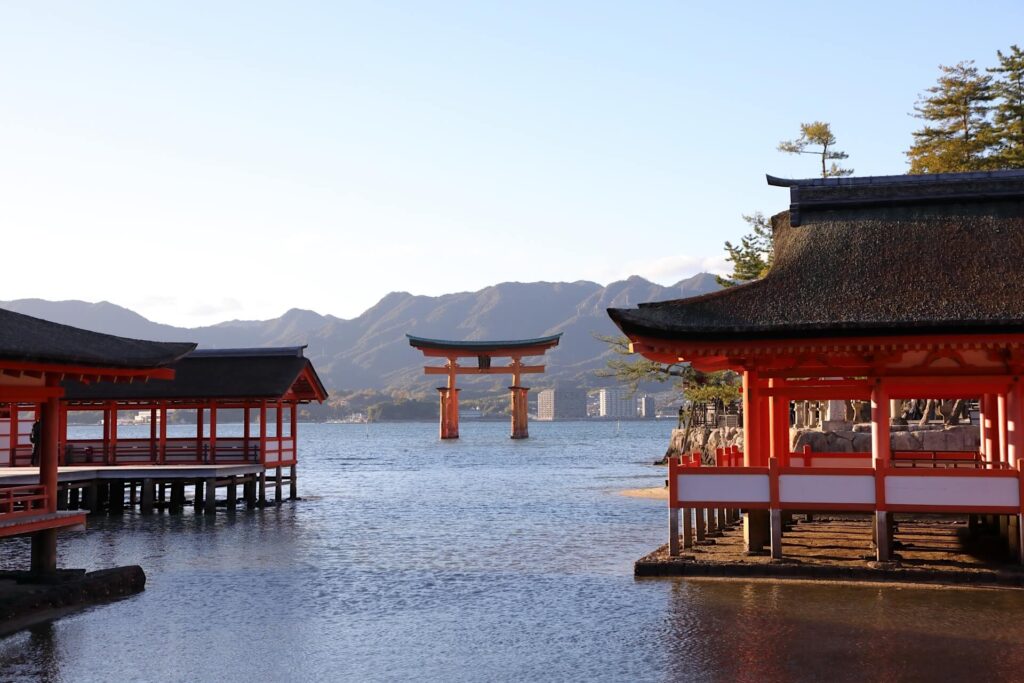
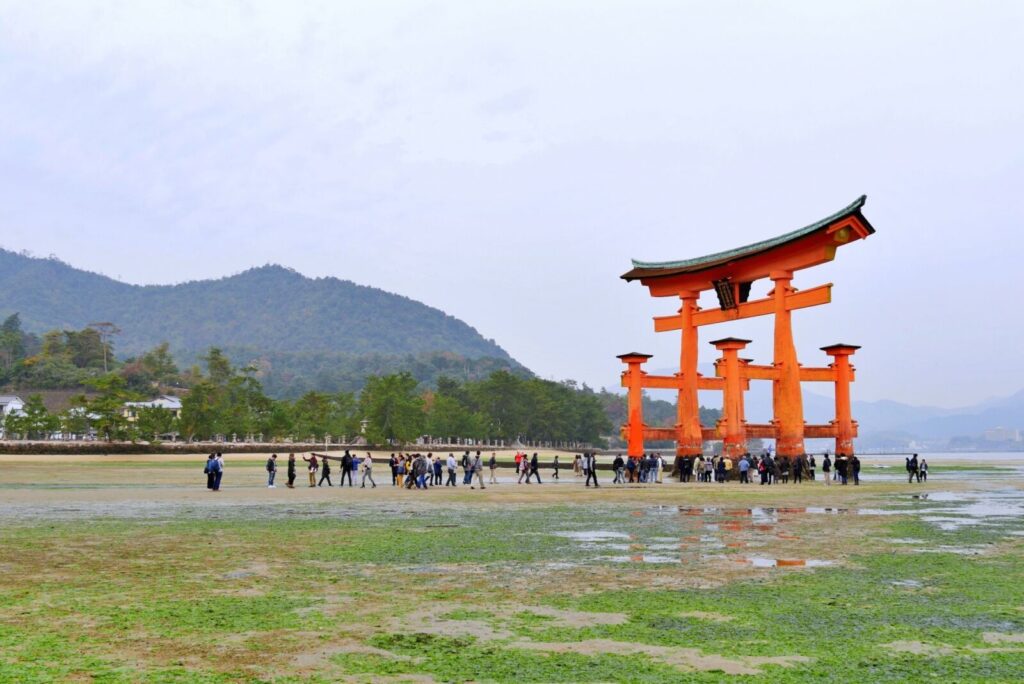
One of the main highlights of the shrine, the great O-torii gate, can be appreciated both during high tide and low tide. When the tide is high, the shrine and gate appear as though they are "floating" on the water. When the tide recedes, visitors can walk up to the gate and admire its formidable size and craftmanship from up-close. The tide times vary from day to day so we recommend checking them out online a couple of days before your visit so you may have the chance to experience the gate in both ways.
Since its construction, the Itsukushima Shrine has been rebuilt and restored many times due to natural disasters, but great efforts have been put into preserving Itsukushima's historic appearance. To learn more about this notable shrine's history and its opening time and entry fees, check out our Itsukushima Shrine activity page.
MOUNT MISEN
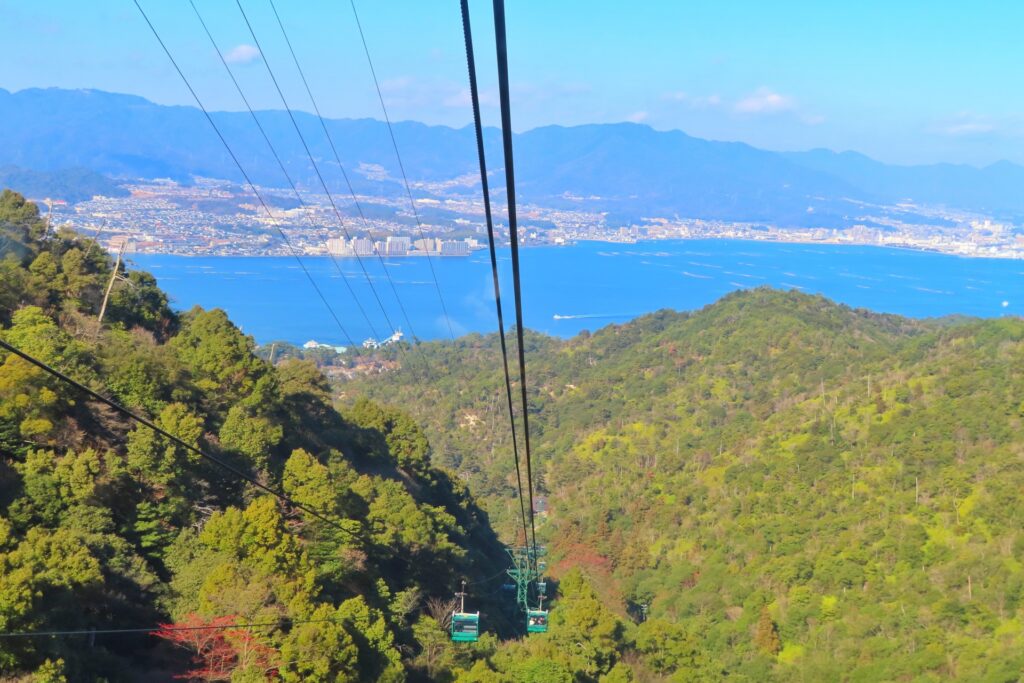
Standing at 535 meters above sea level, Mount Misen is the tallest point on the island of Miyajima. The mountain is regarded as a place of mystical beauty and religious worship. It's origins as a holy site trace back to 806, when the Buddhist monk Kūkai built a hall on the mountain and underwent one hundred days of rigorous training there. This monk was also the one who gave Mt. Misen its current name, due to its resemblance to Mt. Shumisen, the center of the world in Buddhist cosmology.
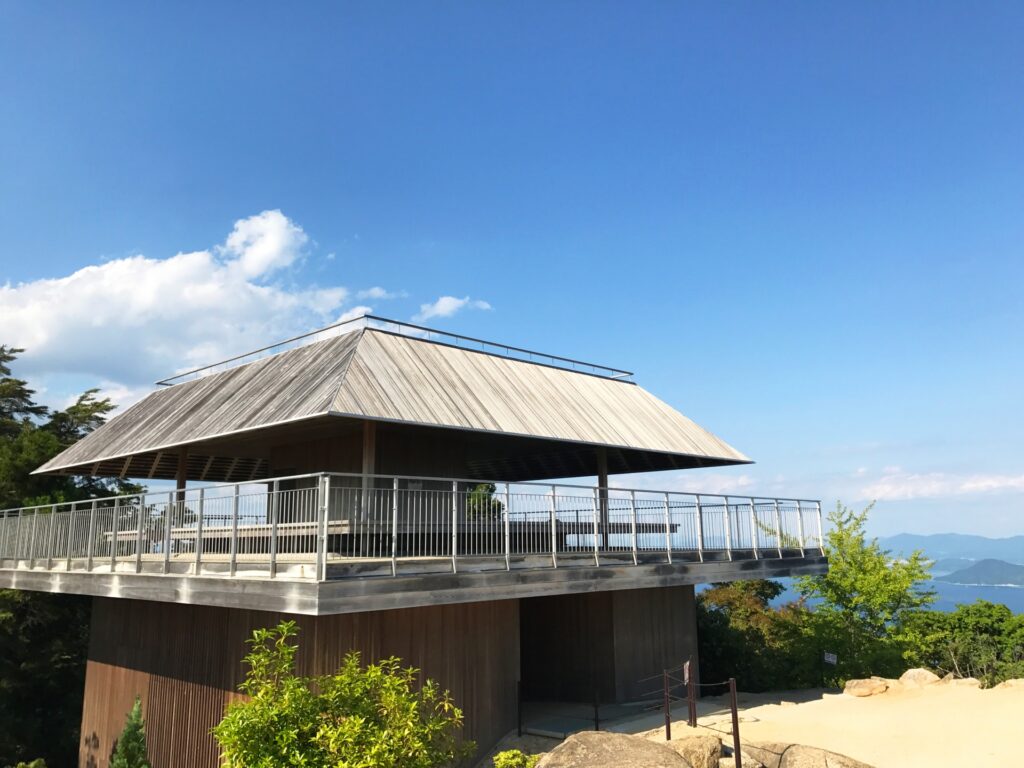
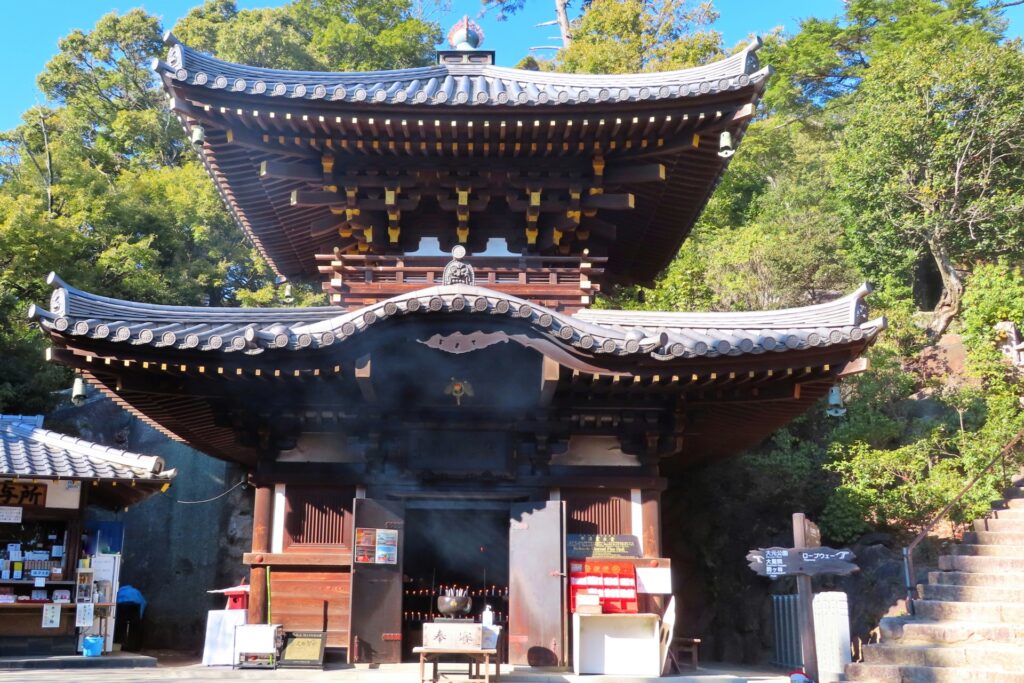
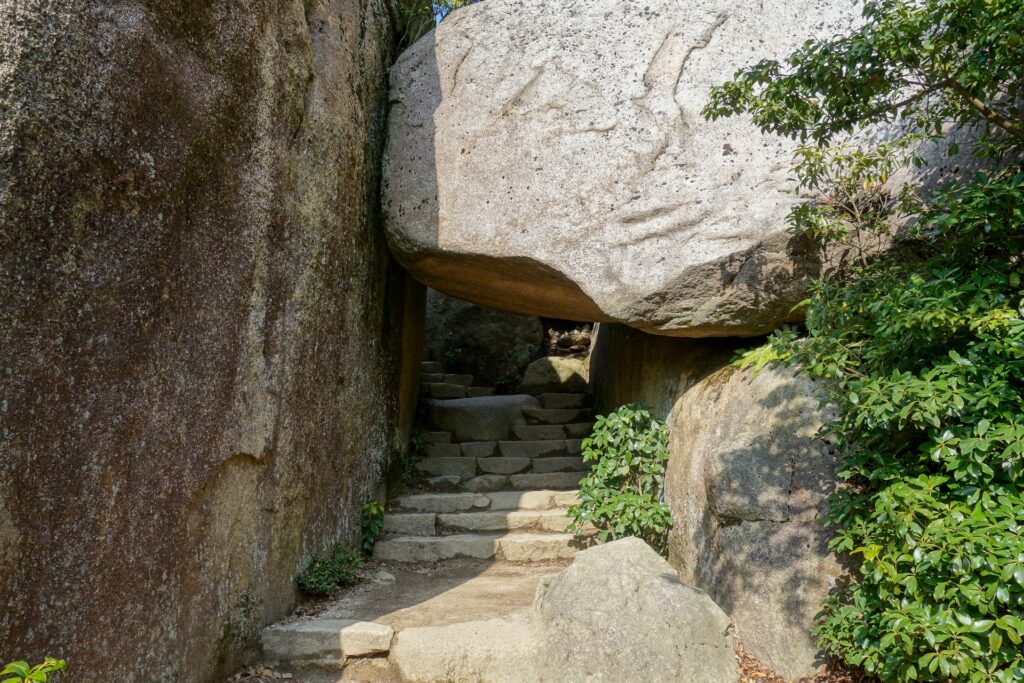
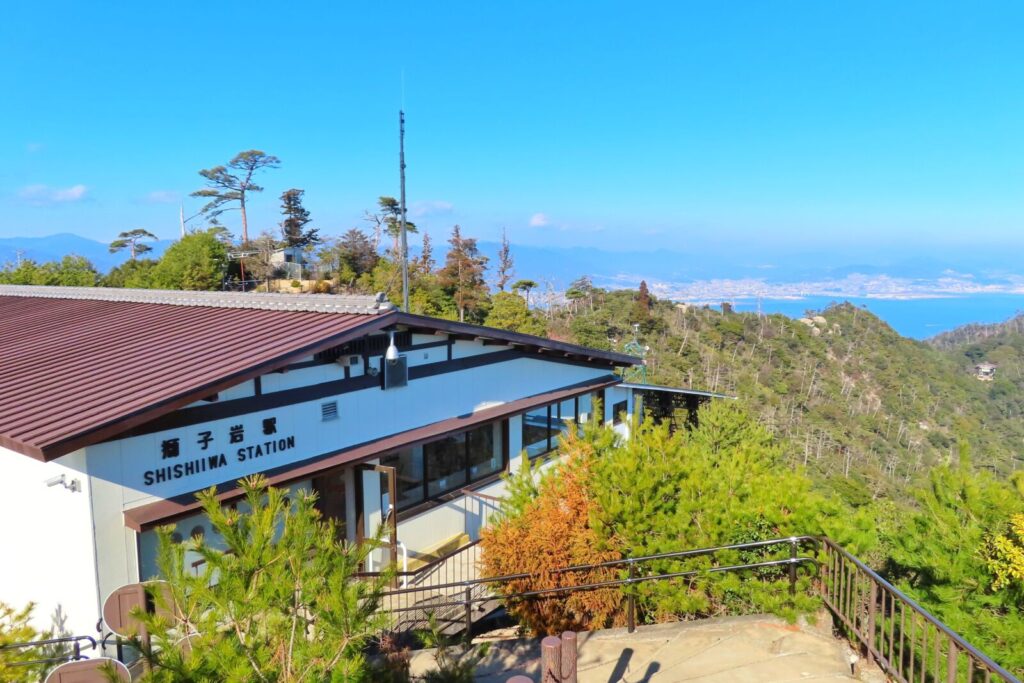
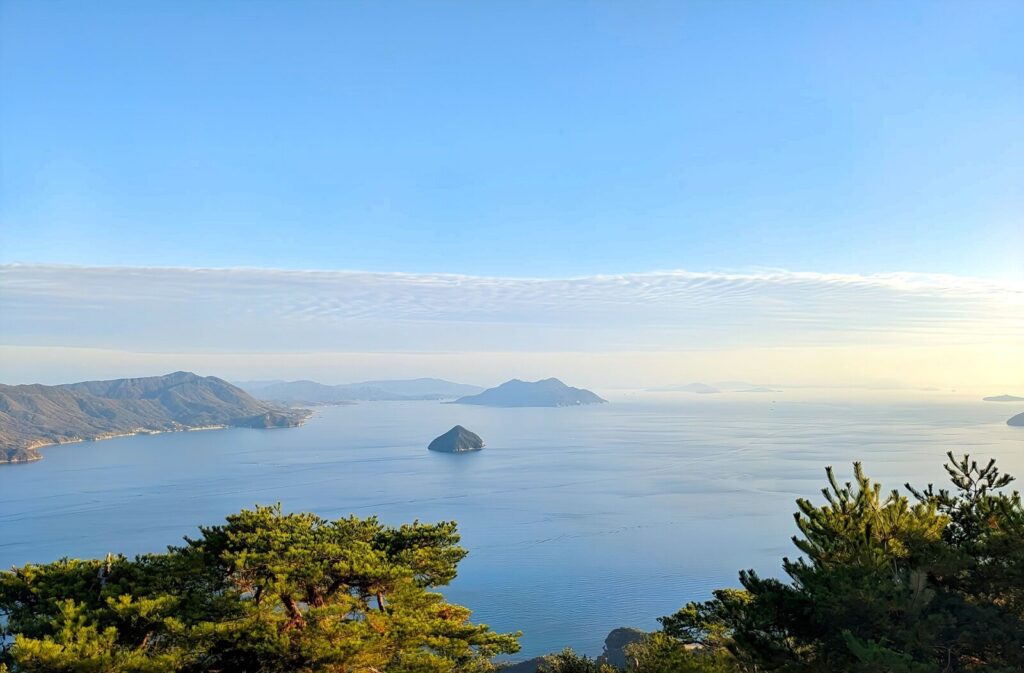
Mt. Misen is a a place of abundant nature and profound peace. As you walk up to the mountain and make your way to the summit, travelers can encounter multiple temples, prayer sites, stunning landscapes, and unique rock formations. Reaching the summit rewards visitors with a fantastic view of the Seto Inland Sea. Today, one can reach the top of the mountain through either three different hiking paths or a ropeway. Visiting Mt. Misen is a way to venture deeper into Miyajima's history and beautiful scenery.
To get more detailed information about the mountain, its hiking trails, and the ropeway's fares and hours, you can take a look at our Mount Misen activity page.
SIGHTSEEING SPOTS
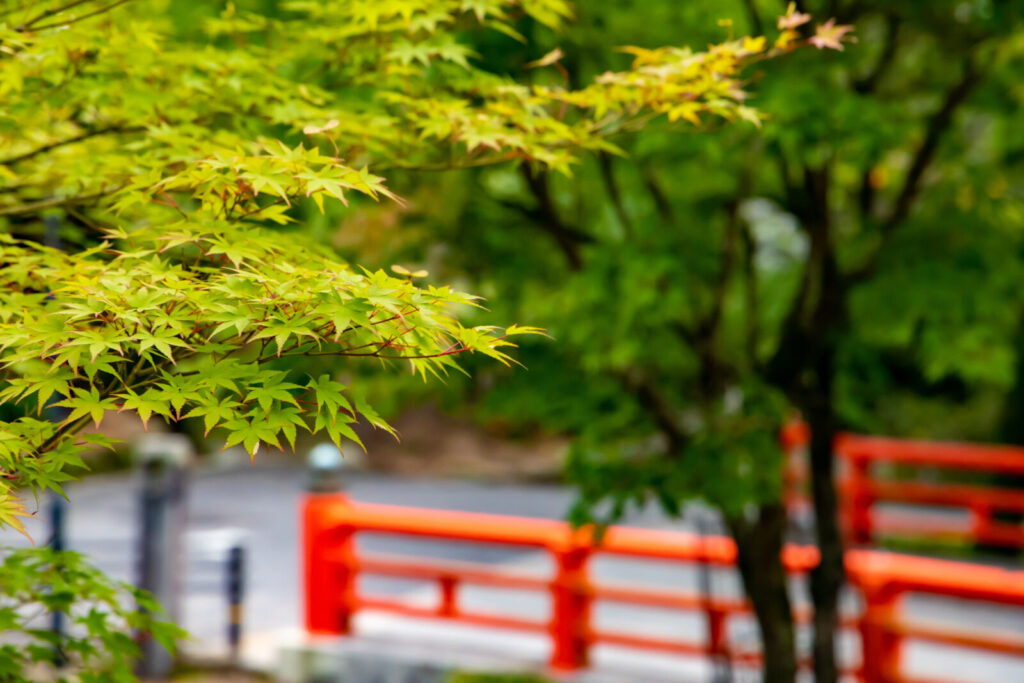
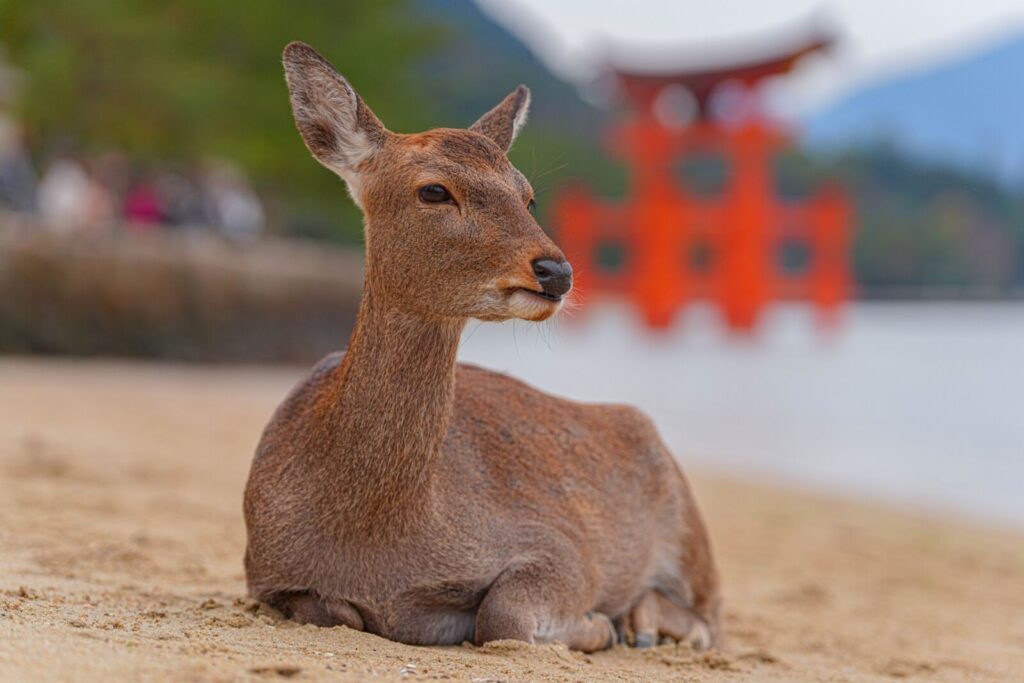
As already mentioned multiple times throughout this article, Miyajima is a place of great beauty and worship. As such, there are many more sightseeing spots other than the renowned Itsukushima Shrine which can be found around the island. For example, the various vermillion bridges in Miyajima help enhance the island's picturesque scenery. The multiple wild deer roaming about also elevate the charm of area. Additionally, there are many more temples and structures which add beauty and meaning to Miyajima. Below, we have listed some other places of note within the island which are well worth a visit.
Daisho-In Temple
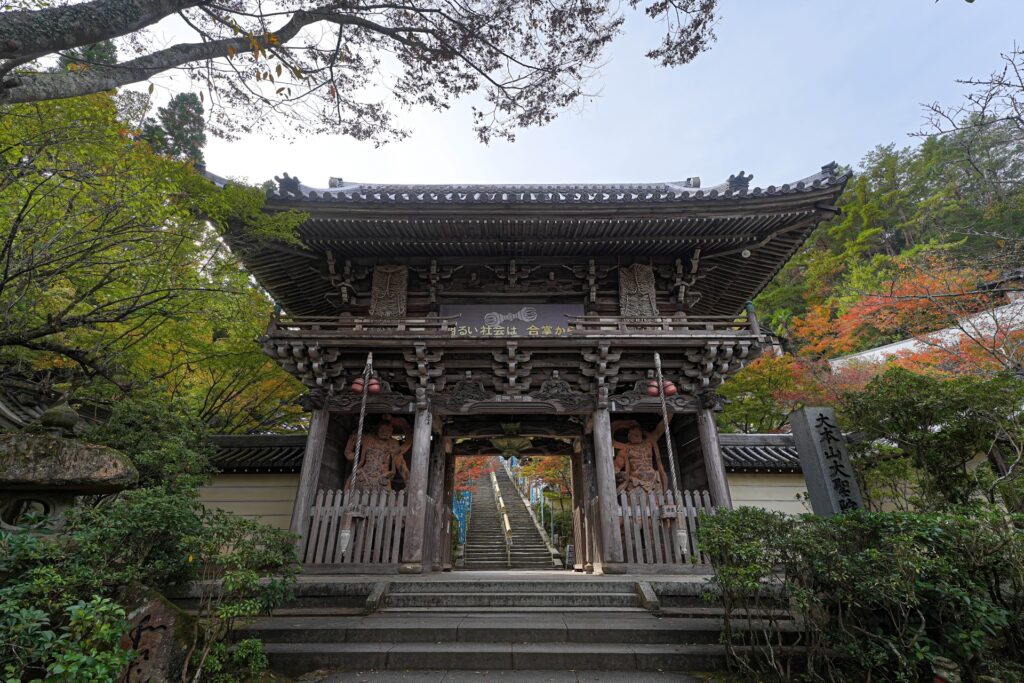
Founded in 806 by the monk Kūkai, Daisho-in is a Buddhist temple of the Shingon sect which stands at the foot of Mt. Misen. It is an impressive site with extensive temple grounds filled with many different statues, halls, and other structures. The Main hall of the temple enshrines the deity Fudo Myo-o, one of the five "Wisdom Kings" of Buddhism. Other notable places within the grounds include the Kannon-do Hall housing the bodhisattva Kannon, a walking path covered with 500 Rakan statues, stairs lined with prayer wheels, and the Henjokutsu Cave filled with 88 individual altars.
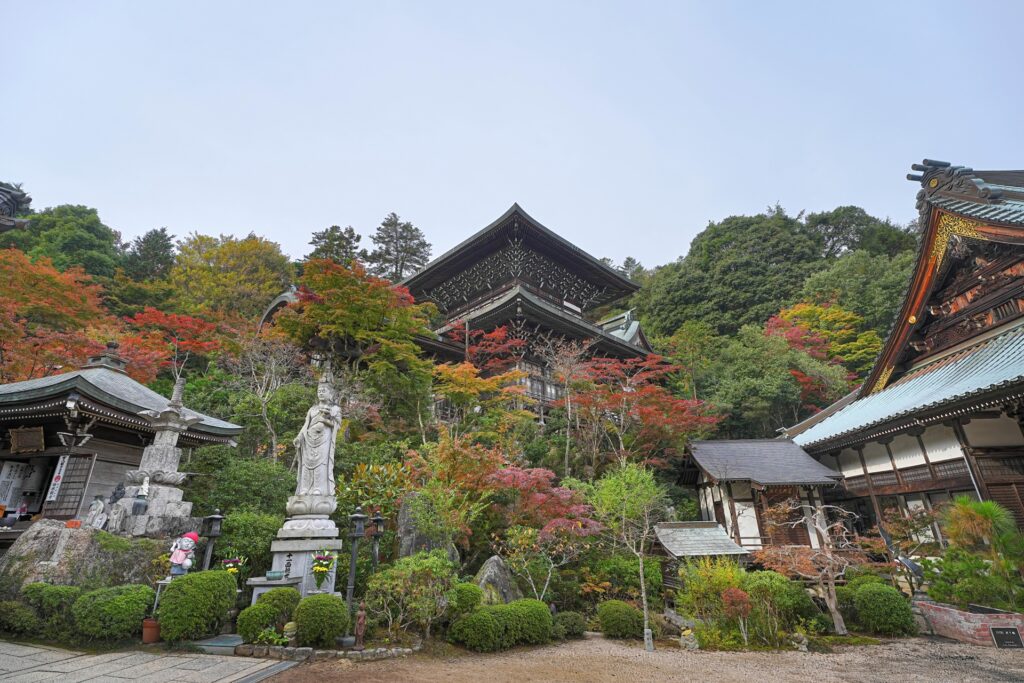
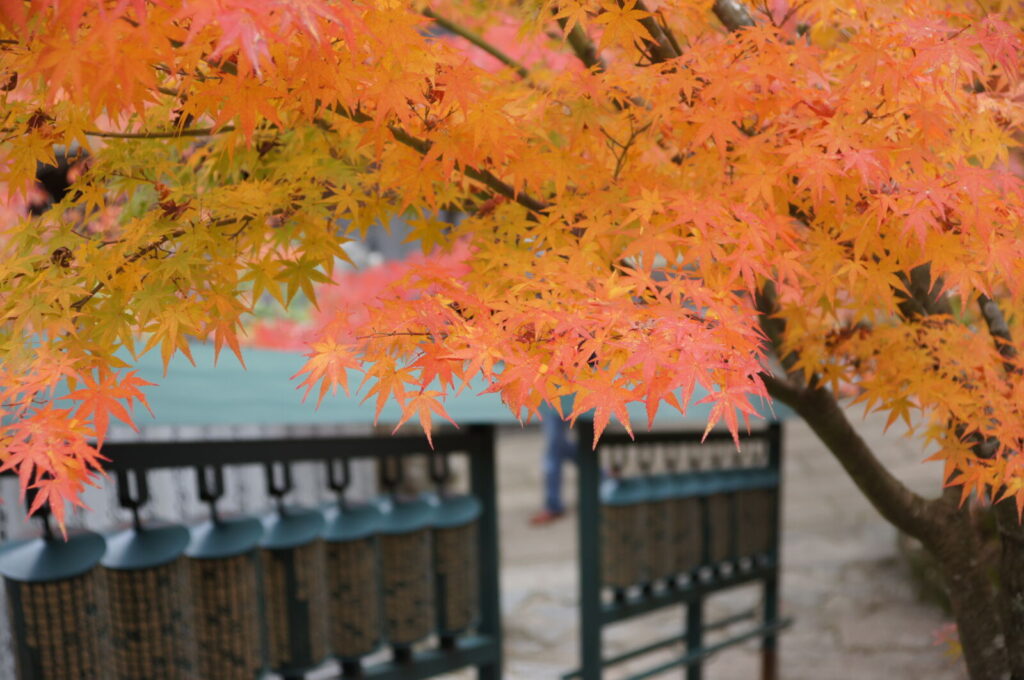
Embedded in the base of the mountain, the Daisho-in Temple strikes a perfect balance between nature and man-made structures. Different plants and trees grow throughout the temple grounds and create a sense of tranquility. This vast temple is abound with Buddhist imagery and history, so one can spend upwards of an hour carefully exploring the area. More information about the temple can be found on its separate activity page.
Senjokaku Pavilion
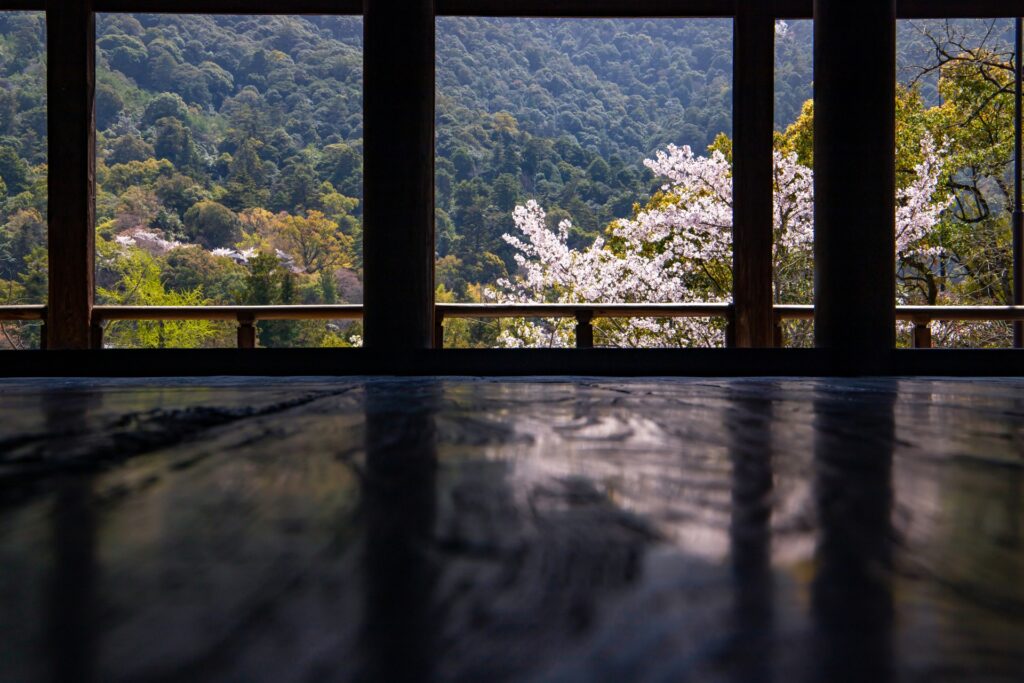
Also known as Hokoku Shrine, the Senjokaku Pavilion was founded under the instructions of one of Japan's three great unifiers, Toyotomi Hideyoshi. The construction began in 1587 and was intended as a place to commemorate soldiers who perished in combat. However, by the time Hideyoshi died in 1598, the structure had not been completed. At this time, the project was abandoned and left in the state that it can be found today. The word Senjokaku roughly translates to "hall of one thousand tatami mats" and accurately reflects the impressive size of the building. As a place meant for prayer and reflection, the pavilion was built with a breathtaking view of Mt. Misen and the island's nature. Today, it is a fantastic location to visit if you want to get a bird's-eye view of Miyajima or sit down to appreciate the scenic beauty of the island.
Misen Reikado Hall
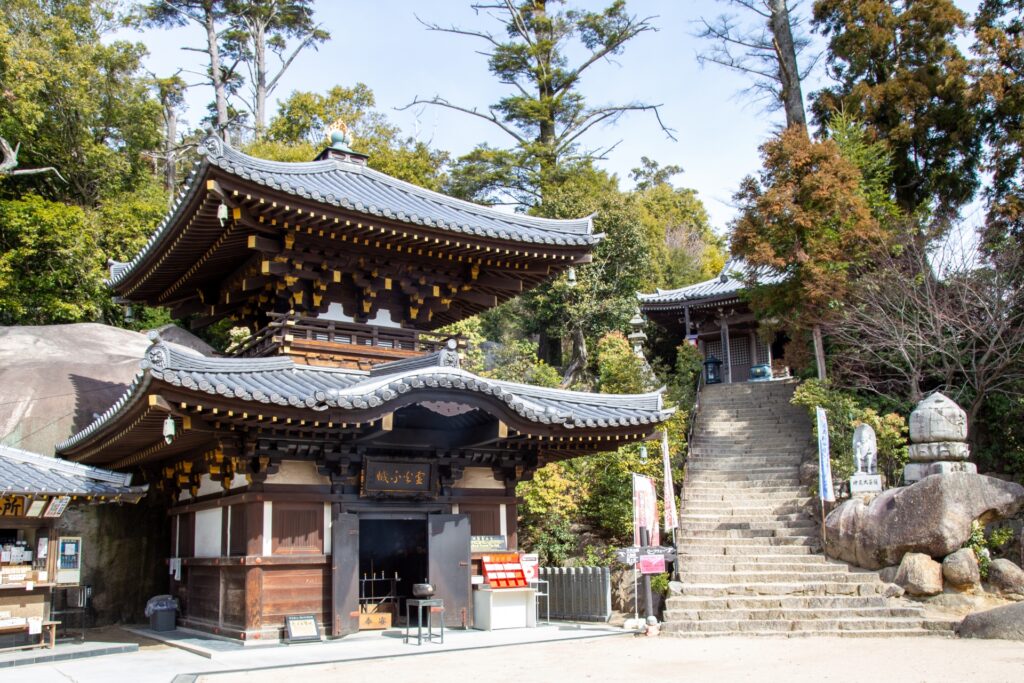
Located a 10-minute walk away from the summit of Mt. Misen, the Reikado Hall is best known for housing the "Unquenchable Fire," a flame which according to legend has been burning for about 1,200 years. This fire was supposedly first lit by Kūkai during his training at Mt. Misen and it is said that the sacred water boiled by the flames of this fire can treat any disease. In recent times, Reikado Hall has also became a place where lovers pledge their eternal love, which much like the "Unquenchable Fire," will never die out. Lastly, this hall is great resting place when hiking from the ropeway station to the summit of Mt. Misen.
Daigan-ji Temple
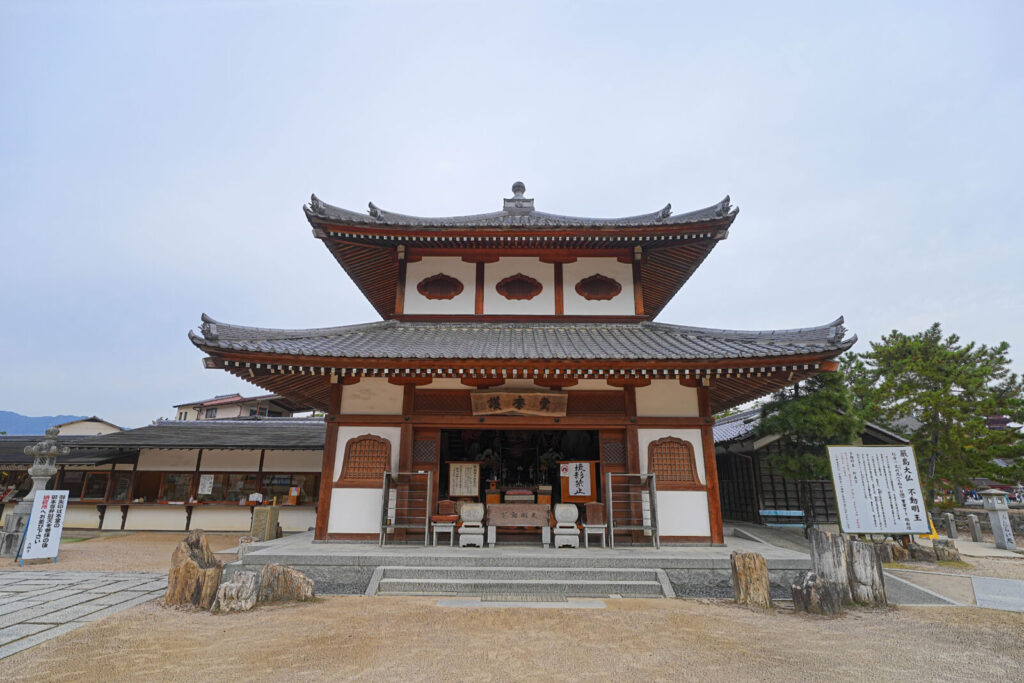
The Daigan-ji temple is an ancient Shingon Buddhist temple whose founding date is not known. It is said to have been rebuilt in the early 13th century and up until the Meiji Restoration, when a law was passed to separate Shinto and Buddhism, it was in charge of repairing and constructing Itsukushima Shrine. The temple is dedicated to the goddess Benzaiten, a deity closely associated with the sea but also known as the goddess of music, wisdom, and wealth. Once a part of the Itsukushima temple complex, Daigan-ji can now be found near the exit of Itsukushima Shrine.
WHAT TO EAT IN MIYAJIMA
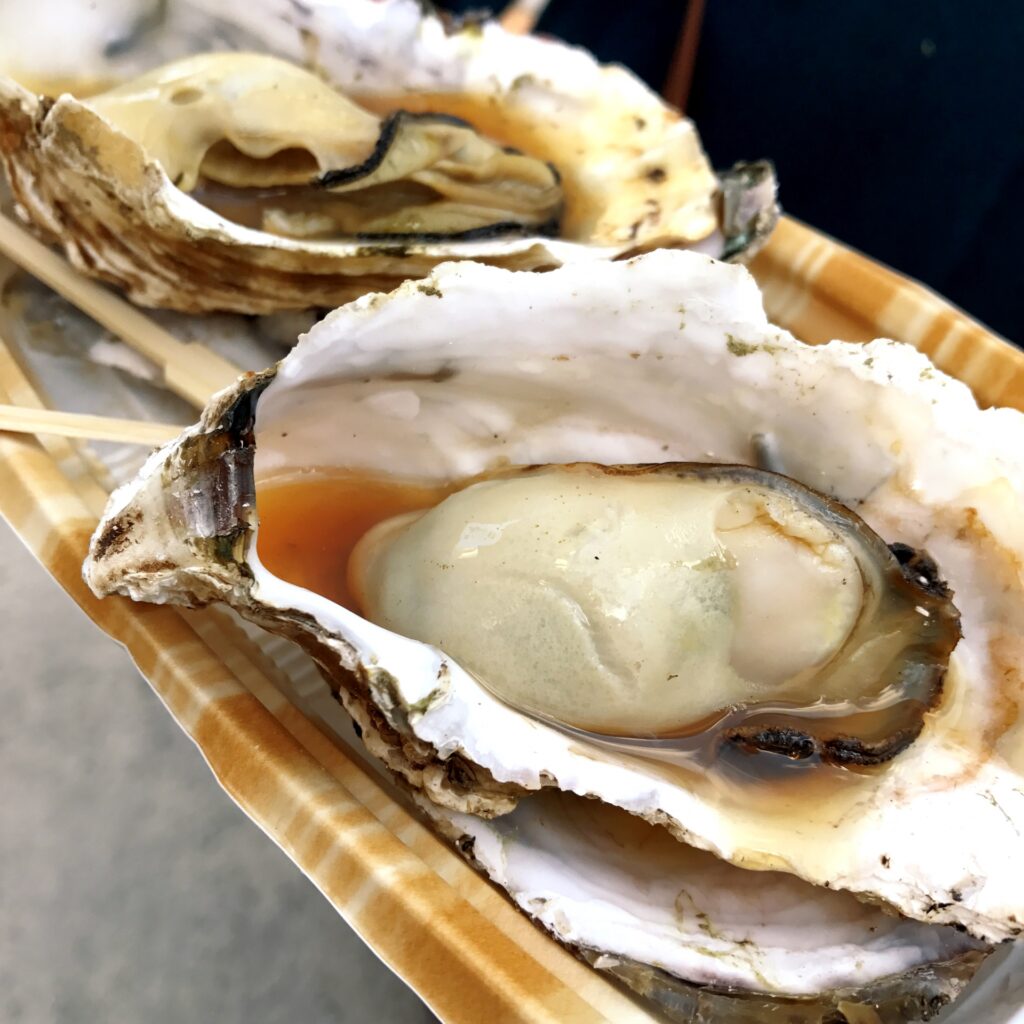
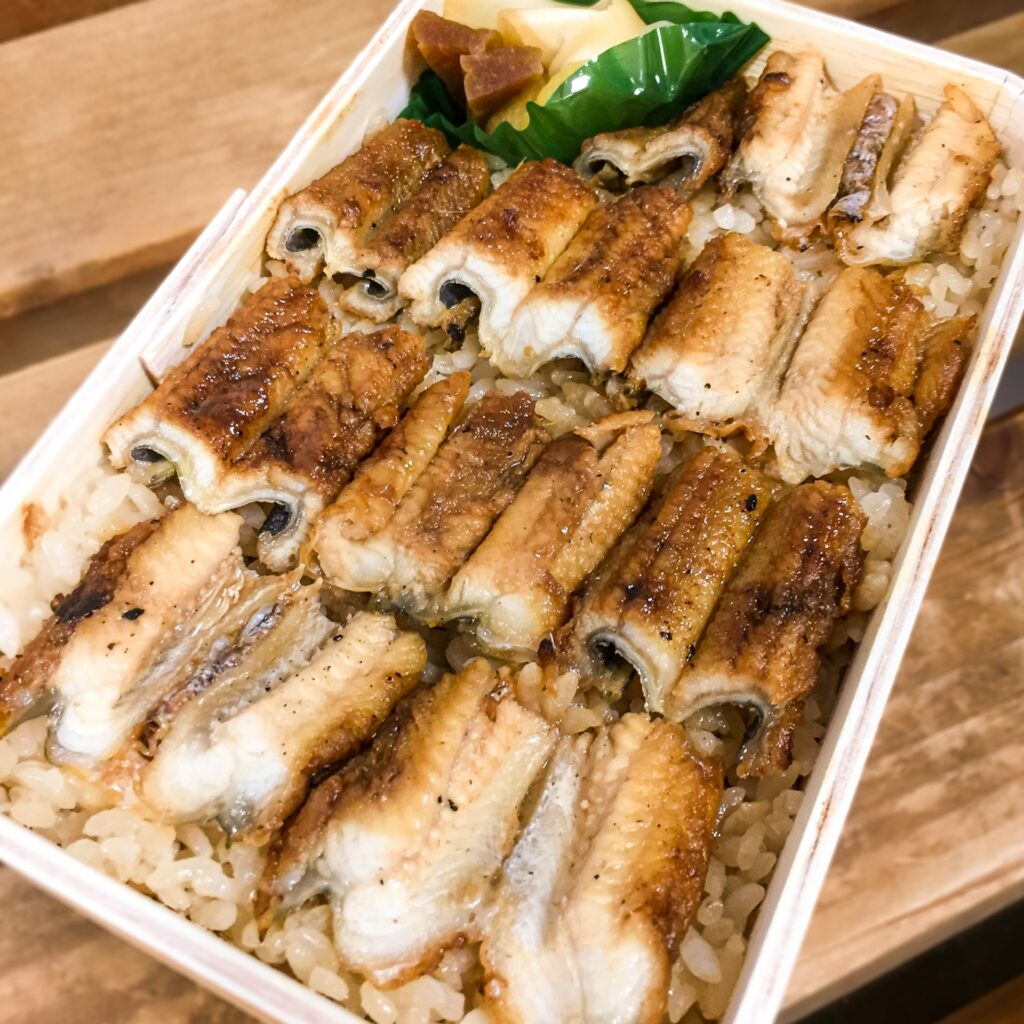
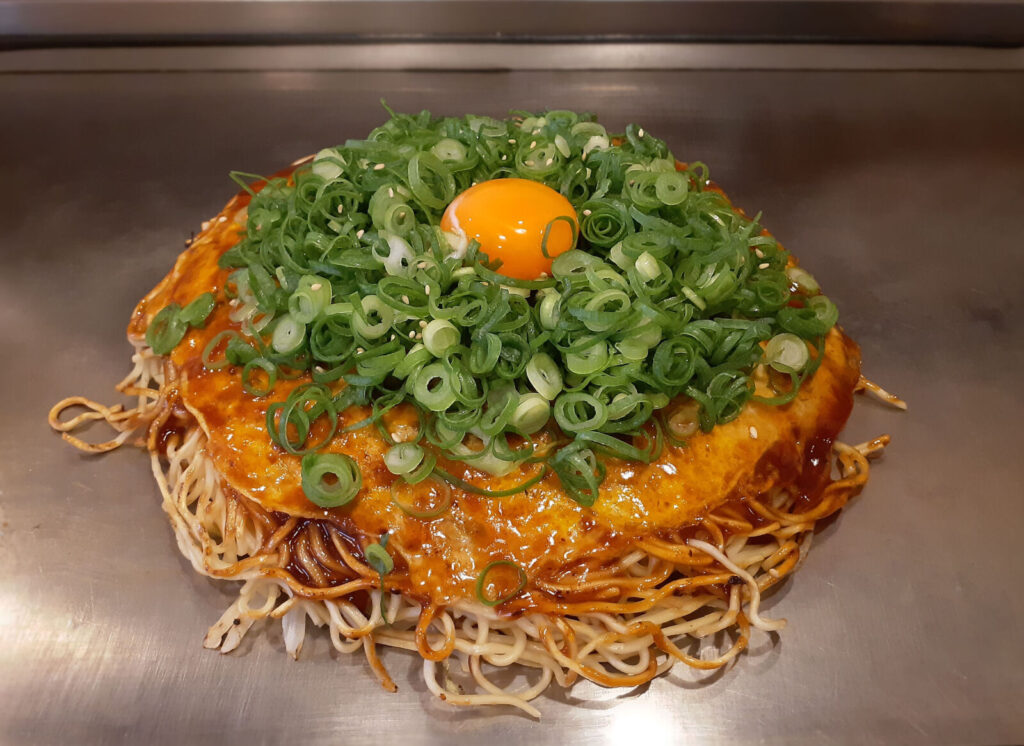
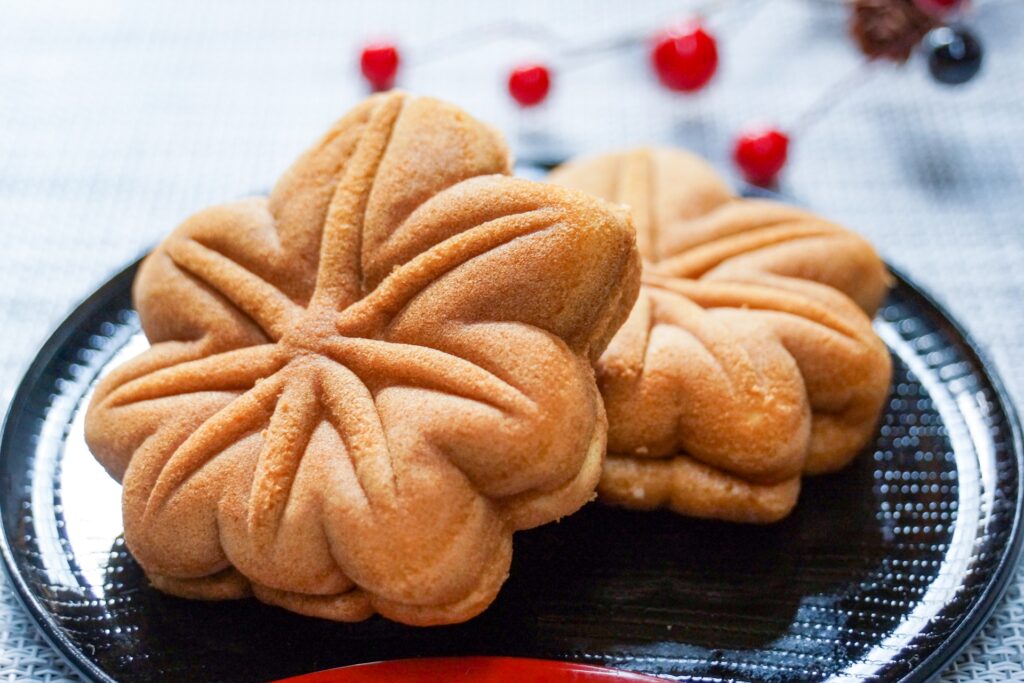
Miyajima can be enjoyed in many different ways, and one of them is certainly through its food. On the island, you will be able to find many local delicacies which are unique to Hiroshima. Miyajima's main street, Omotesandō Shopping Street, is lined on both sides with restaurants and food stalls which offer a great variety of food.
Being an island, Miyajima is of course known for its seafood and oysters are without a doubt one of the most popular dishes. You can enjoy them in many different ways such as fresh, fried, and even cooked into a curry bread. The options are endless and fairly cheap when compared to prices on the mainland. Another popular seafood item is eel, specifically conger eel. It is served over rice in a dish that is known as "anago rice." Lastly, a variety of fish cakes are sold as street food for those looking to eat as they explore the island.
Of course, Miyajima also has plenty of restaurants geared towards Hiroshima's most famous savory specialty, okonomiyaki. You'll be able to find plenty of restaurants where you can sit down and eat this "savory pancake." Other restaurants and cafes along Omotesandō Shopping Street serve mostly seafood related dishes, but it is possible to find some meat-based options in their menus.
Lastly, eating Miyajima's local sweet specialty, Momiji Manjū, is a must when visiting the island. This traditional Japanese confection can be eaten in its customary baked "cake" form, or in its fried version. Momiji Manjū comes with many different fillings and can be bought as a souvenir or eaten as a type of street food. Once you taste one of these maple leaf-shaped desserts, you won't be able to stop having more!
FESTIVALS AND EVENTS
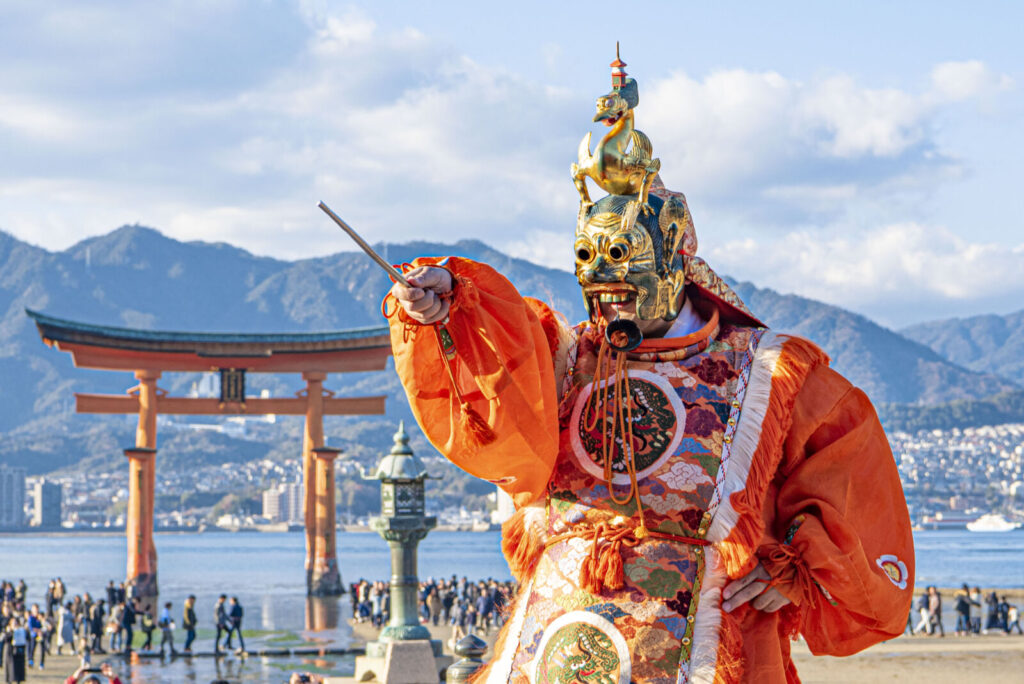
As a place known mainly for its religious sites, it is no surprise that Miyajima hosts a great number of festivals and events throughout the year. You can find details related to some of them below, but this is by no means and exhaustive list. Due to the overwhelming amount of celebrations taking place on the island, we are only able to briefly outline some of the most popular ones. It is also worth noting that many of the festivals and events that took place in the past have been on an indefinite hiatus since the start of the COVID-19 pandemic.
New Year's Ceremonies
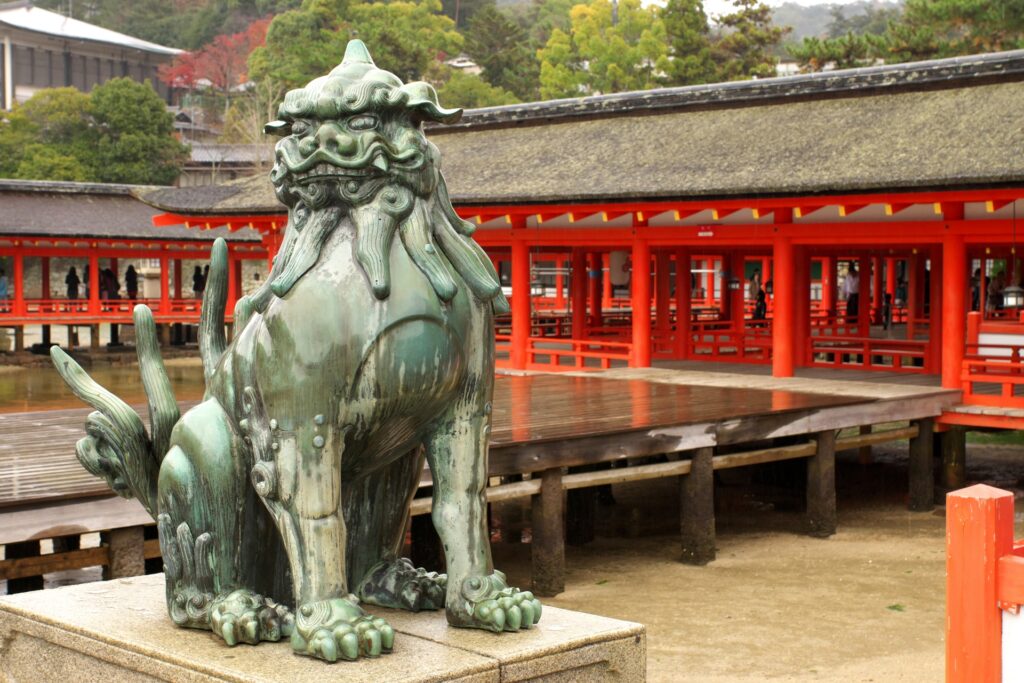
The first week after New Year's Day is the busiest time of the year for shrines and temples across Japan. Locals are rushing to do hatsumōde, the first shrine visit of the year, and while most visit a shrine or temple that is close to their home, others embark on a trip to Japan's most famous and prestigious ones. On Miyajima, the line to enter Itsukushima Shrine extends all the way to the ferry terminal during this time. Several ceremonies take place throughout the day, accompanied by Bugaku (Japanese traditional dance and music) and Noh (form of traditional Japanese theater) performances. The first ceremony starts at midnight on the 1st of January and the last one usually occurs four days later. All of these events take place inside Itsukushima Shrine and and can be viewed after paying the standard JPY300 entry fee.
During this time of the year the island is extremely crowded and difficult to navigate, so it is preferable to stay overnight in order to enjoy the peaceful scenery of Miyajima once most visitors have left on the last ferry. Beware though, given the popularity and significance of Itsukushima Shrine, accommodations need to be booked months in advance for those wishing to spend the first week of the year on the island. Take a look at our "Miyajima Area" hotel page to get more information about places to stay in Miyajima.
Fire Walking Ceremony
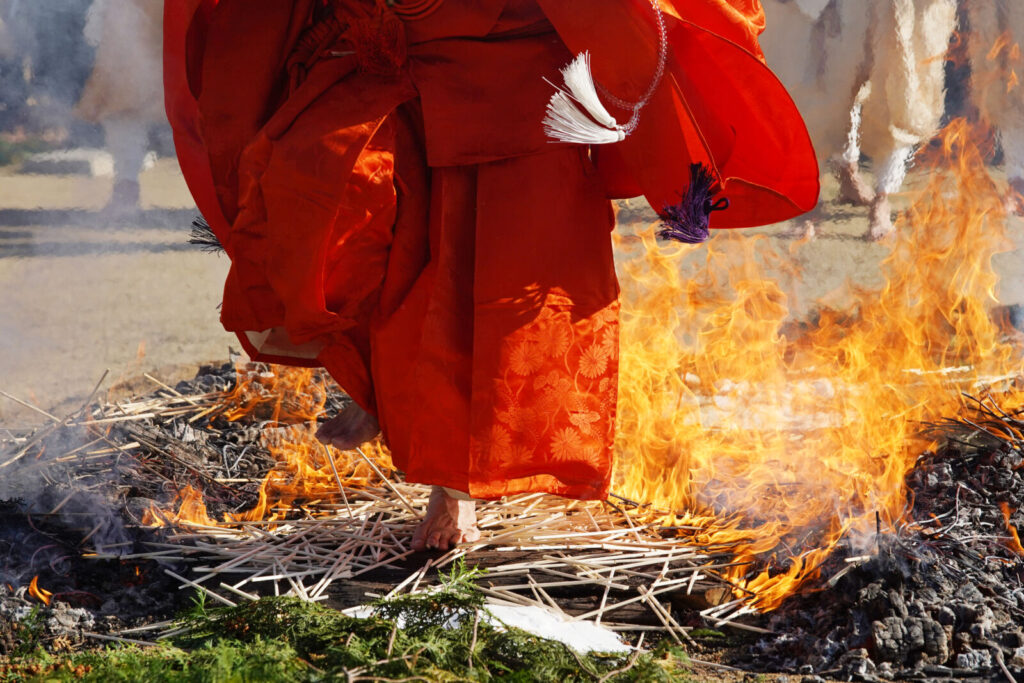
Fire Walking is a religious ritual performed by members of the Shingon sect of Buddhism. It involves burning wooden prayer sticks using coal, and then walking over said coal barefoot while chanting prayers for good health and fortune. The burning of the sticks is meant to symbolize the destruction of negative energies and release from suffering while the fire walking is seen as a way of purifying oneself. The head Buddhist monk is the first to walk over the hot coals, followed by the other monks and finally any attendees who wish to participate. This ritual is usually performed twice a year at the Daisho-in Temple, in the months of April and November. Entry and participation is free.
Bugaku - Toka-sai and Kikka-sai
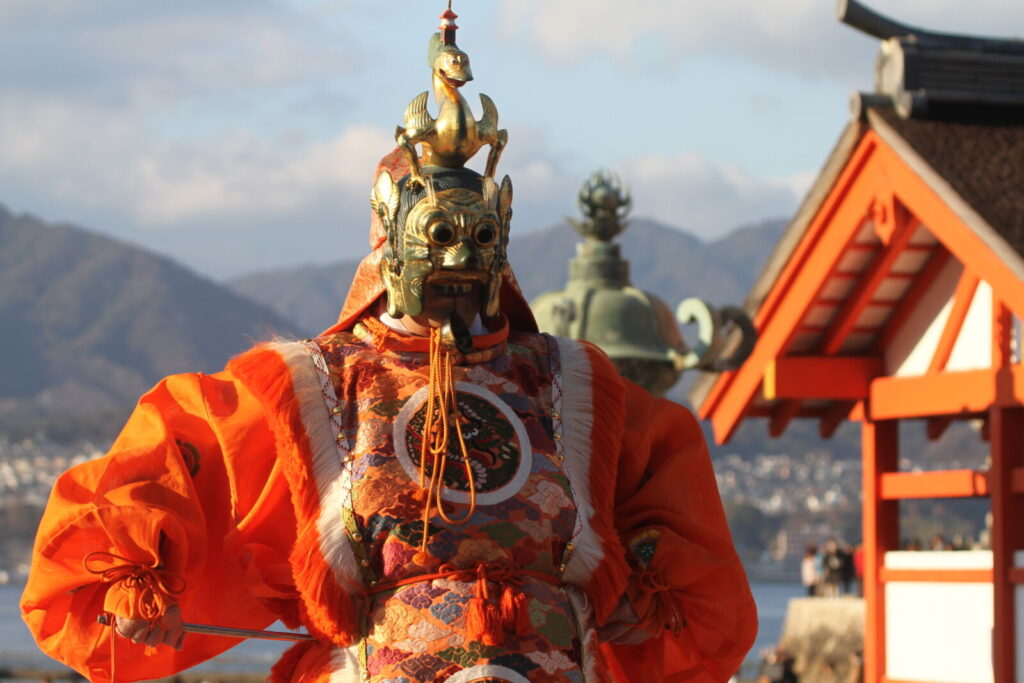
Bugaku is a type of traditional Japanese dance and music which was originally performed to the Japanese Imperial Court. It was brought over from Kyoto to Miyajima by Kiyomori Taira, but its true origins lie in the the traditional dances of China, Korea, India, and Vietnam. Multiple different Bugaku performances take place throughout the year at Miyajima, most happening during the first week of January. The dancers perform programs made up of specific pieces taken from the bugaku repertoire; the programs can range from a single dance to as many as eleven different ones. Toka-sai, the Peach Blossom Ceremony which happens in April, and Kikka-sai, the Chrysanthemum Ceremony which takes place in October, are the events in which most bugaku performances can be observed. Since the dances are done on a stage inside Itsukushima Shrine, visitors must pay the shrine's JPY300 entry fee to view them from up-close.
Oyster Festival
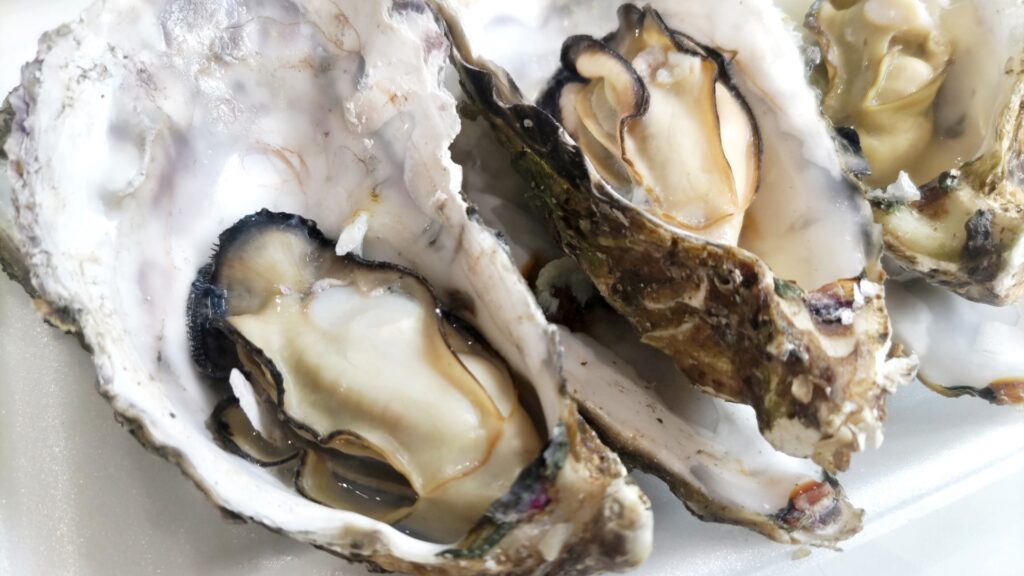
The Oyster Festival is a time in which oysters, one of Miyajima's local specialties, are served at very low prices and prepared in all manner of ways. Fried and steamed oysters, oyster stew, oyster egg drop soup, and much more are available at prices as low as JPY100. This event takes place every year during the second weekend of February, and it has more to offer beyond tasty seafood. Stage performances, such as traditional Japanese drumming and Bugaku can be enjoyed while consuming the island's delicious treats. Unfortunately the festival can be canceled if there is a poor harvest, as was the case in 2024.
HOW TO GET TO MIYAJIMA
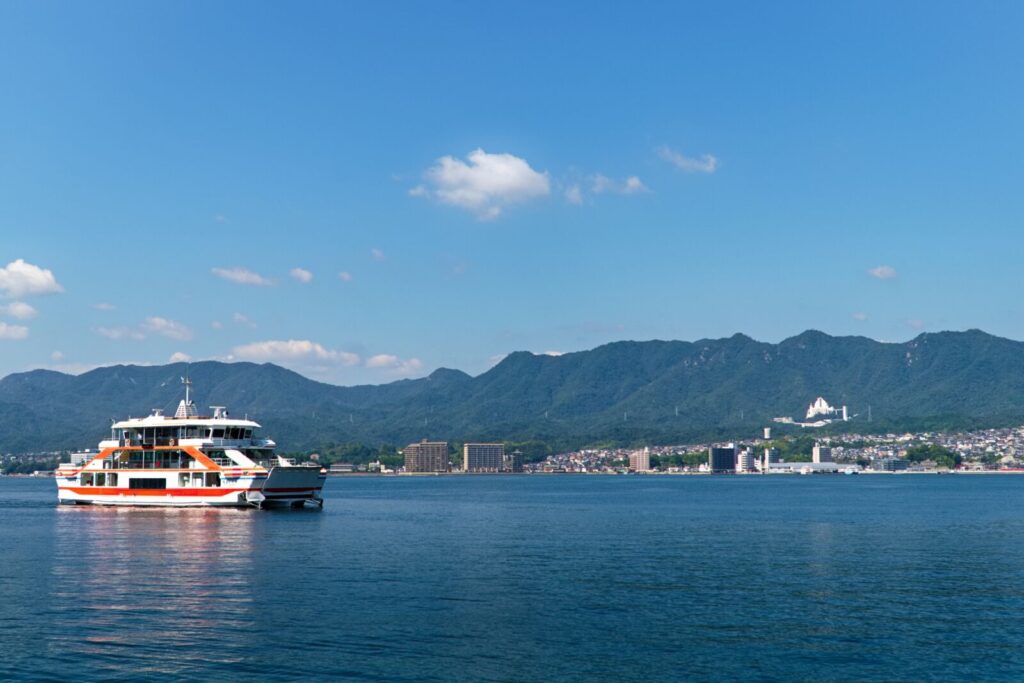
Most visitors get to Miyajima starting from the JR Hiroshima Station. From the station you can take a local train on the San'yo Line bound for Iwakuni or Ono-Ura. These trains run fairly frequently, about every 15 minutes or so. Get off at Miyajimaguchi Station and walk to the Miyajimaguchi Ferry Terminal which is just 3 minutes away. The cost for the train ride is JPY420 and travel time is about 25 minutes.
From here, you can board either the JR West Miyajima Ferry or the Miyajima Matsudai Kisen Ferry. The ferries are run by different companies but both cost the same amount, JPY200 (one-way) for adults and JPY100 (one-way) for children. This total price does not include the obligatory JPY100 visitors tax that all people entering Miyajima must pay. You may purchase your one-way or roundtrip tickets at the Miyajimaguchi Ferry Terminal (return tickets can also be purchased separately on the island) or you can use your IC card to tap-in just as you would for the local trains or buses. The ferries take about 10 minutes to reach Miyajima and run quite frequently.
While the standard ticket for both ferry companies cost the same, they offer different discounts and services. For example, for the JR West Ferry, the cost of the ferry is completely covered by the Japan Rail-Pass or JR West Rail-Pass. The visitors tax must still be payed for separately. The Matsudai Kisen Ferry does not accept these passes, but it does offer a special ferry-plus-ropeway discount ticket which will save you JPY400 for adults and JPY200 for children.
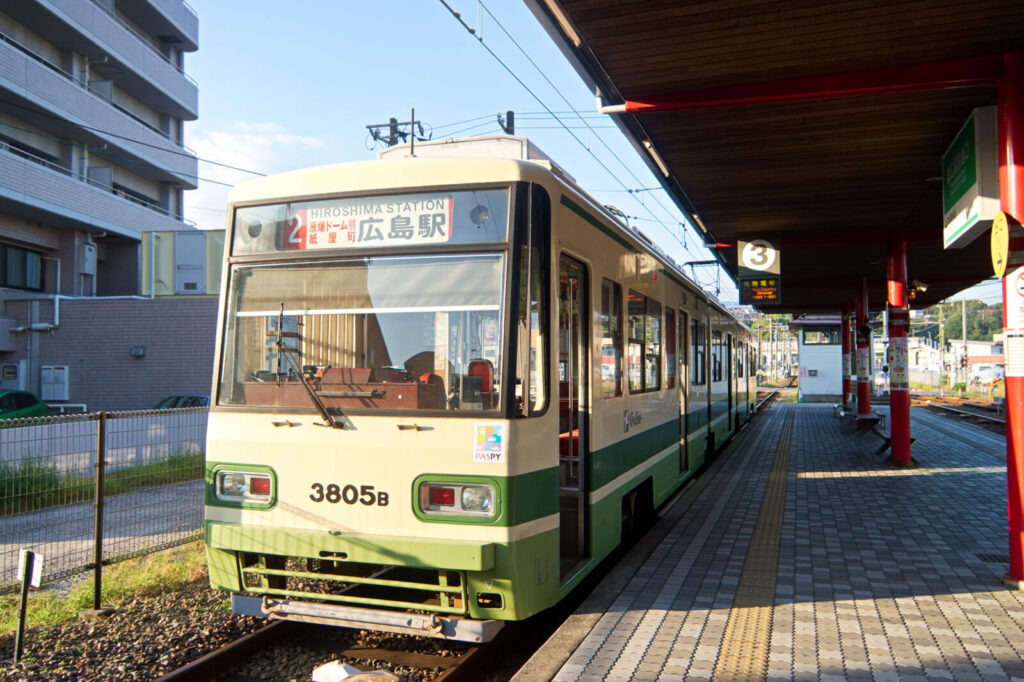
Instead of using the train, you can also board the Streetcar at Hiroshima Station bound for Hiroden-Miyajimaguchi (Line 2). The streetcar is much slower than the train and it can take upwards of 70 minutes to get to the Miyajimaguchi Ferry Terminal. Some people prefer this route since they want to experience riding an "old-fashioned" tram and spend more time observing the scenery of Hiroshima, but we do not recommend this option for those who are short on time. The total cost of this ride is JPY270.
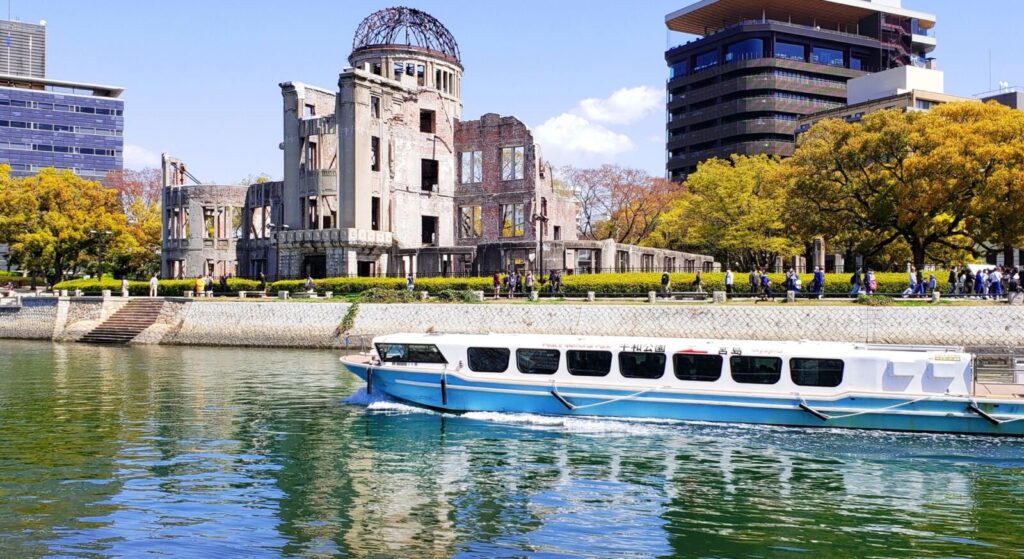
There is an additional option for guests who are staying at a hotel closer to the city center or who are wanting to visit Peace Memorial Park before going to Miyajima. There is a special ferry departing from a pier near the Atomic Bomb Dome starting at around 8:30 AM all the way till 17:00. This ferry is called the Hiroshima World Heritage Sea Route and costs JPY2200 one-way and JPY4000 roundtrip for adults. This does not include the JPY100 Visitors Tax which will also be charged when paying for the ticket. The ferry ride is about 45 minutes long and convenient for those who are closer to the Peace Memorial Park area than Hiroshima Station.
Guests can also mix and match different modes of transportation to fit their travel itineraries. You can board the World Heritage Sea Route ferry to arrive at Miyajima, but choose to return on one of the cheaper ferries bound for the Miyajimaguchi Ferry Terminal, followed by taking the train back to Hiroshima Station. If figuring all of this out sounds too overwhelming or stressful, take a look at our Miyajima tours below, where we will handle all the of the logistics for you!
ACCOMODATIONS AROUND MIYAJIMA
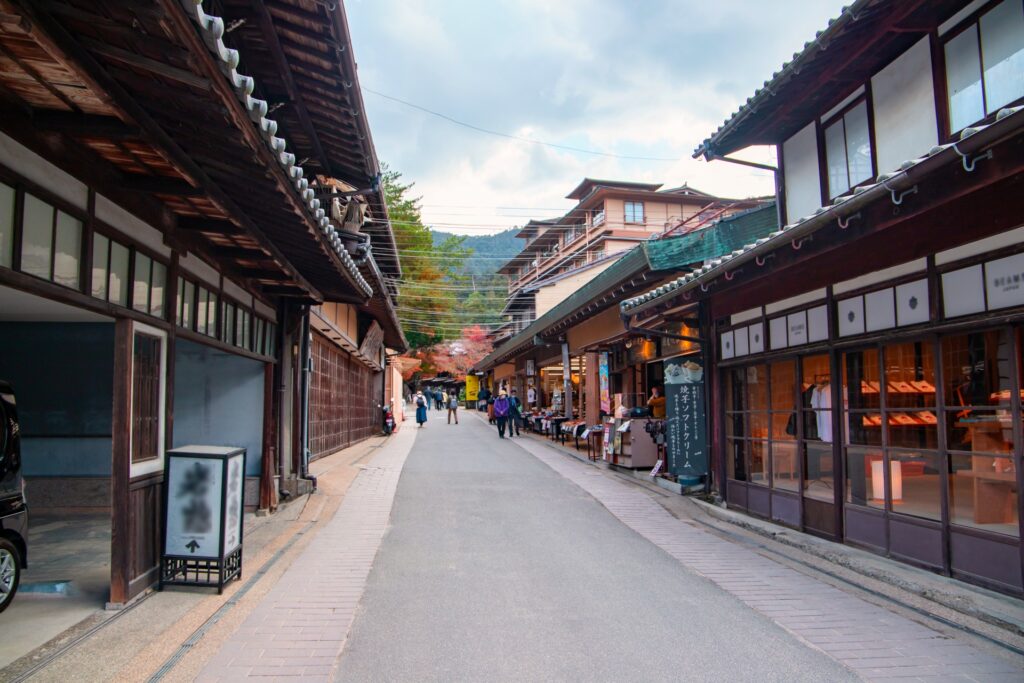
While it is possible to explore Miyajima in a single day, the best way to enjoy the relaxing and peaceful atmosphere of the island is certainly by staying overnight. This way, guests do not have to rush through the different locations, and can enjoy a larger range of activities. Additionally, you can avoid the large crowds which form during the day, as the island becomes fairly empty once visitors begin heading back to the mainland. You'll also be able to see the great O-torii gate illuminated by lights from sunset till 23:00; a unique sight which many tourists do not get the opportunity to experience.
In Miyajima, you can find a good range of accommodations, ranging from budget options to high-end "ryokan" (traditional guesthouses). Plenty are located near the ferry terminal making them easy to access on foot. For guests looking to find out more information about accommodations in Miyajima, we recommend checking out our "Miyajima Area" hotel page.
TOURS VISITING MIYAJIMA
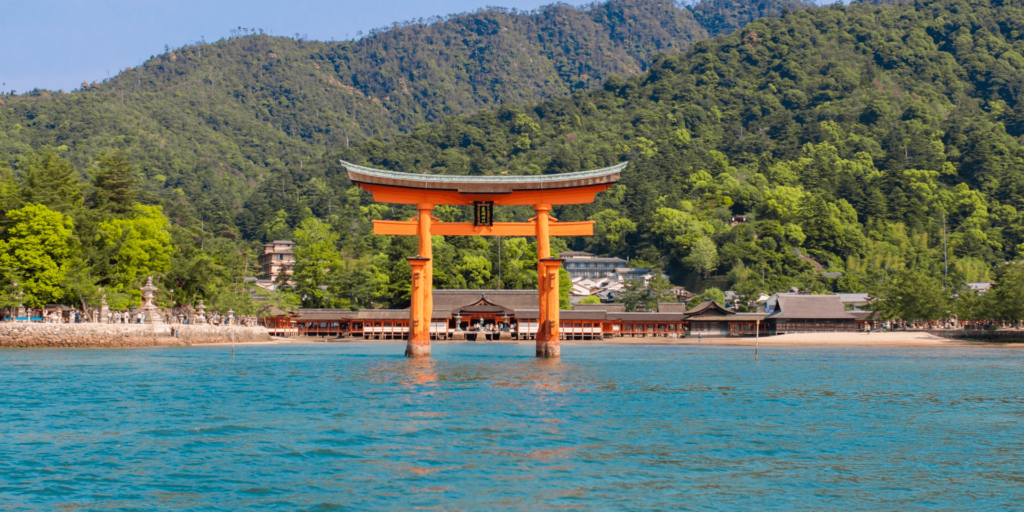
A visit to Hiroshima is not complete without a stop by the iconic island of Miyajima; thus, we offer several tours which will help you enjoy the main highlights of the area. All of our tours below include a guided visit to Itsukushima Shrine, Daisho-In Temple, and Senjokaku Pavilion. Additionally, you will be able to enjoy plenty of free time on the island, and if the timing is right, you'll also have the opportunity to walk up to the great O-torii gate during low tide. Find the tour which best fits your travel plans and enjoy an unforgettable day in Hiroshima!
Best suited for travelers who only have 1 day to visit Hiroshima, this tour will take you to all the main tourist spots in the city as well as in Miyajima. In the city center, you will stop by Shukkei-en Garden, Hiroshima Castle, the Atomic Bomb Dome, and the Peace Memorial Museum. You will then be able to ride a convenient ferry from Peace Memorial Park to the island of Miyajima. Here, we will break for lunch and free time before reconvening for the guided tour of the island. The tour begins and ends at Hiroshima Station, so if you're staying in Osaka or Kyoto, you can arrive via Shinkansen in the morning and return back to your hotel the same way in the evening. Book now to enjoy all of Hiroshima's top tourist locations within one day!
We recommend this tour to guests who have already visited the main highlights in the city of Hiroshima, such as the Peace Memorial Museum and Atomic Bomb Dome, or to those interested in ascending Miyajima's mountain. This 1-Day Miyajima tour will allow guests to truly immerse themselves in the beauty and nature of the island, basking in its serene ambience and breathtaking landscapes. You will be able to ride the ropeway up Mt. Misen and go on a short hike to reach the summit of the mountain with its stunning view of the Seto Inland Sea. As you hike, you will learn about the "Seven Wonders of Misen." For those most interested in the nature and mystique of Miyajima, this is the tour for you!
This tour is also geared towards travelers who have already visited he Hiroshima city center and now wish to explore beyond that area. It is particularly special because of the fact that you will be able to go to two different prefectures within one day. Located just a 25-minute train ride away from Miyajima, is the city of Iwakuni which lies within Yamaguchi Prefecture. This city is home to one of Japan's three most famous bridges, the Kintaikyo Bridge. On this tour, you will visit both Iwakuni and Miyajima and have the unique opportunity to view two of Japan's most iconic landscapes in a single day. Click the "View Details" button below to learn more about this extraordinary experience!
1-Day Miyajima & Iwakuni Tour: Exploring the Most Iconic Japanese Landscapes
- Spots:
- Pick-up:
- Drop-off:
Of course, we don't only offer tours which stop by Miyajima, so if you would like to take look at the other places you can visit in Hiroshima, you can head over to our "Best Tour around Hiroshima" webpage.



